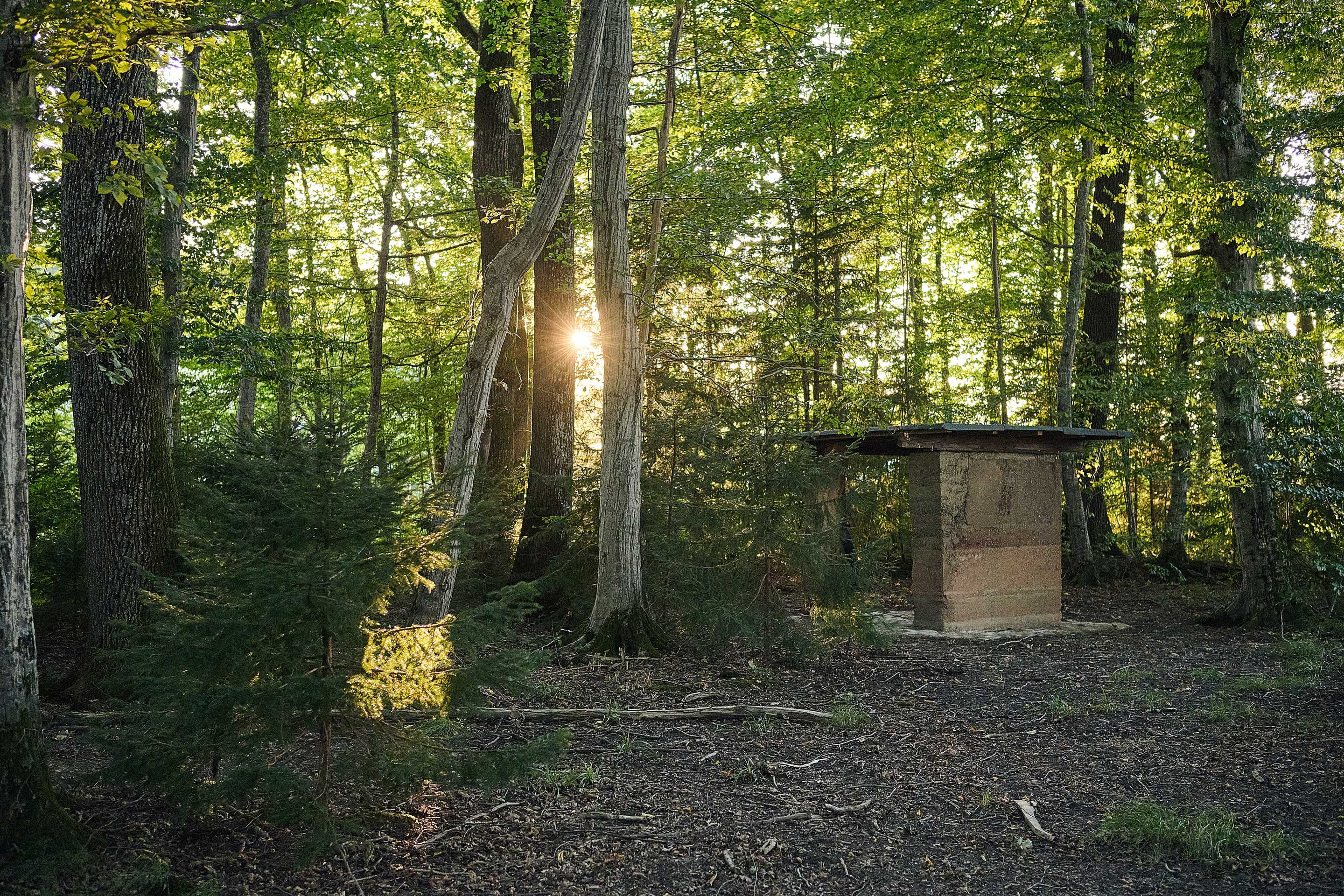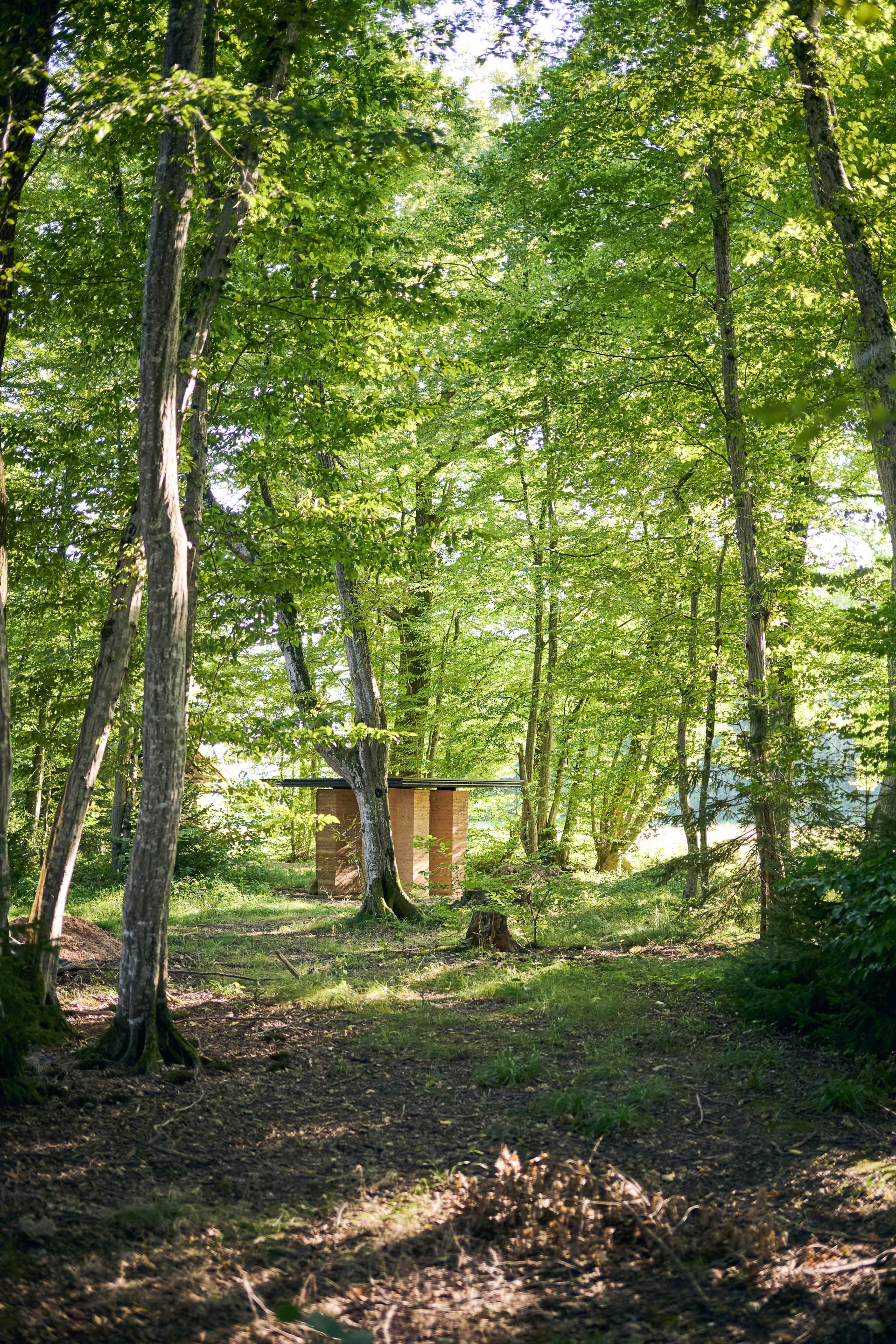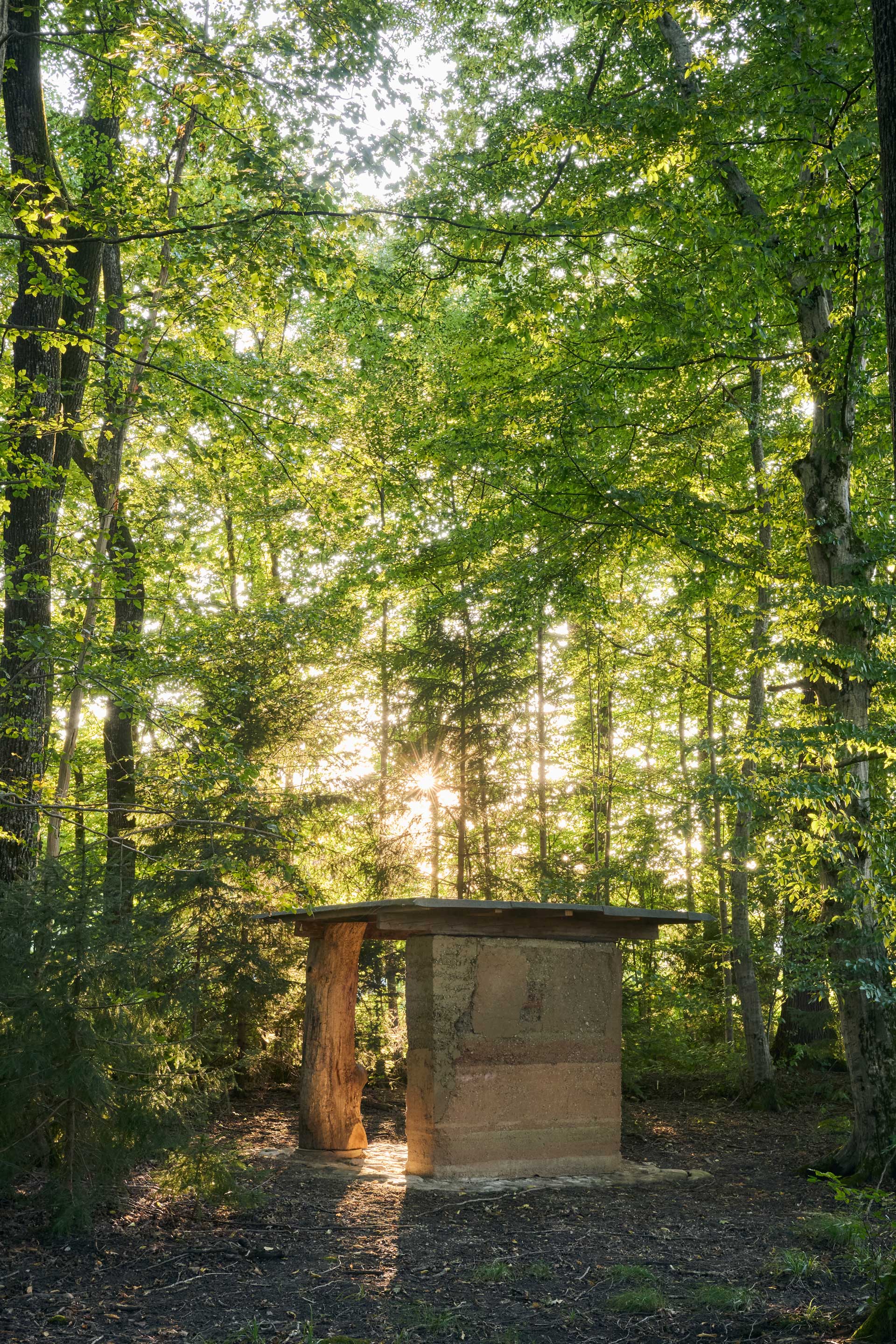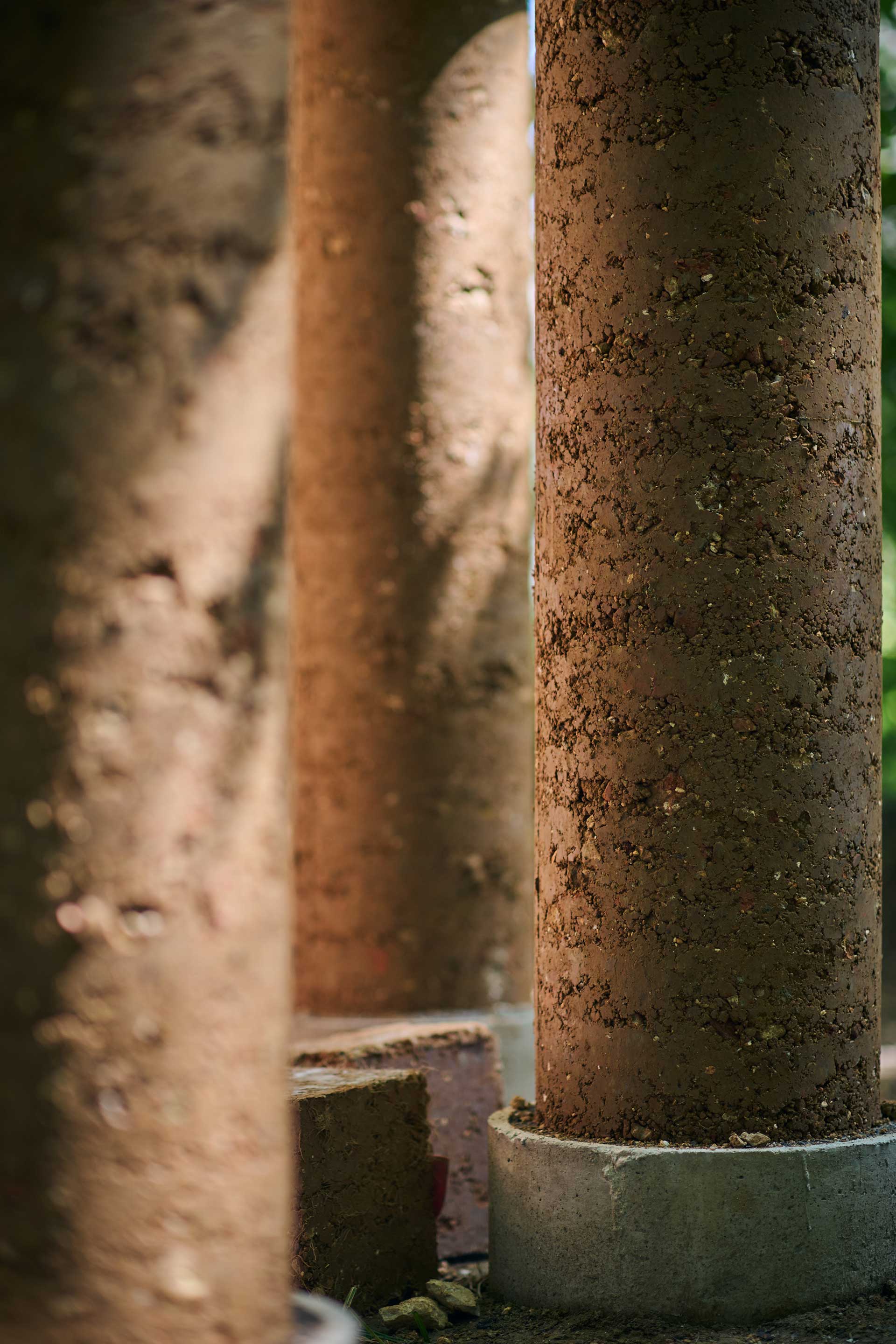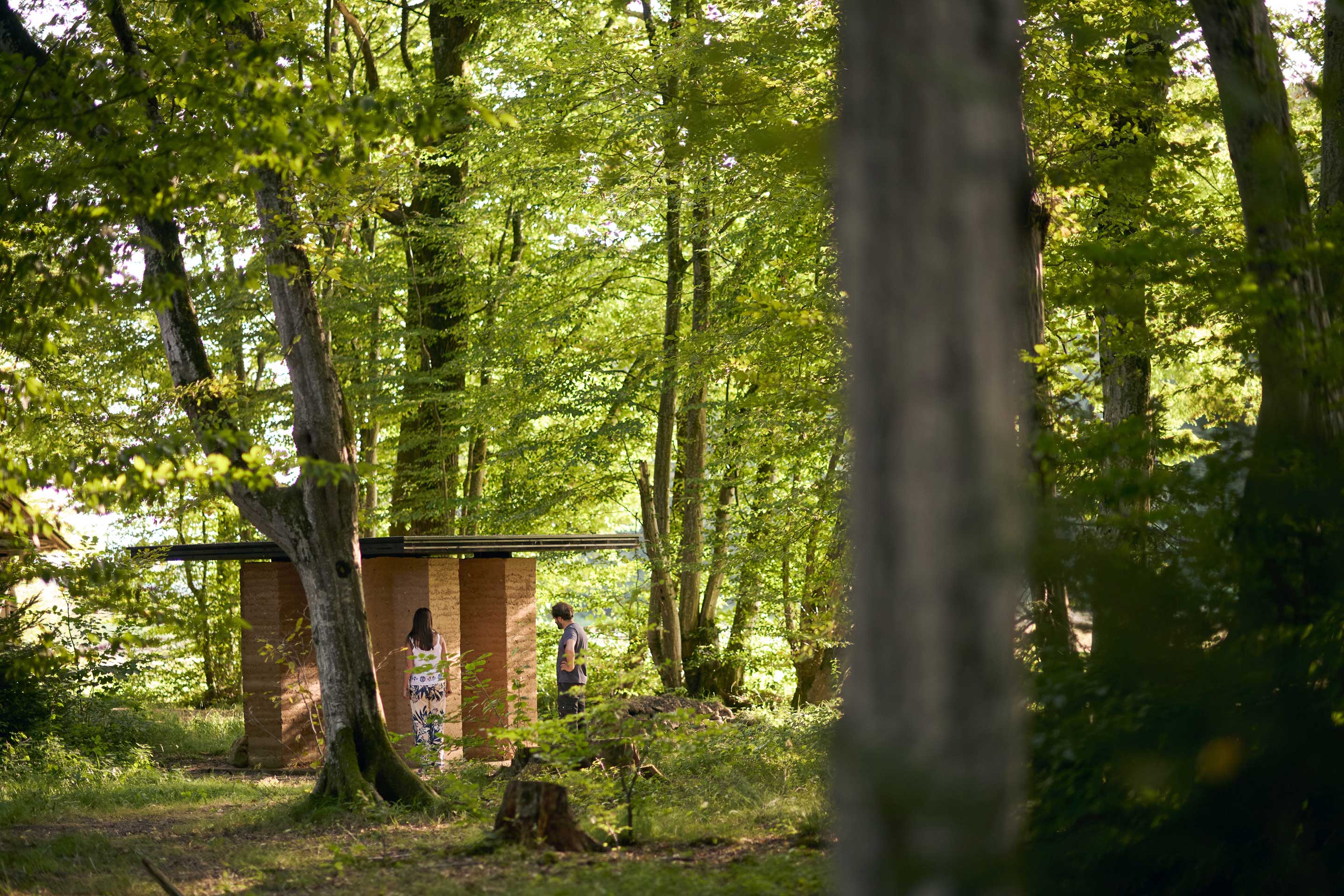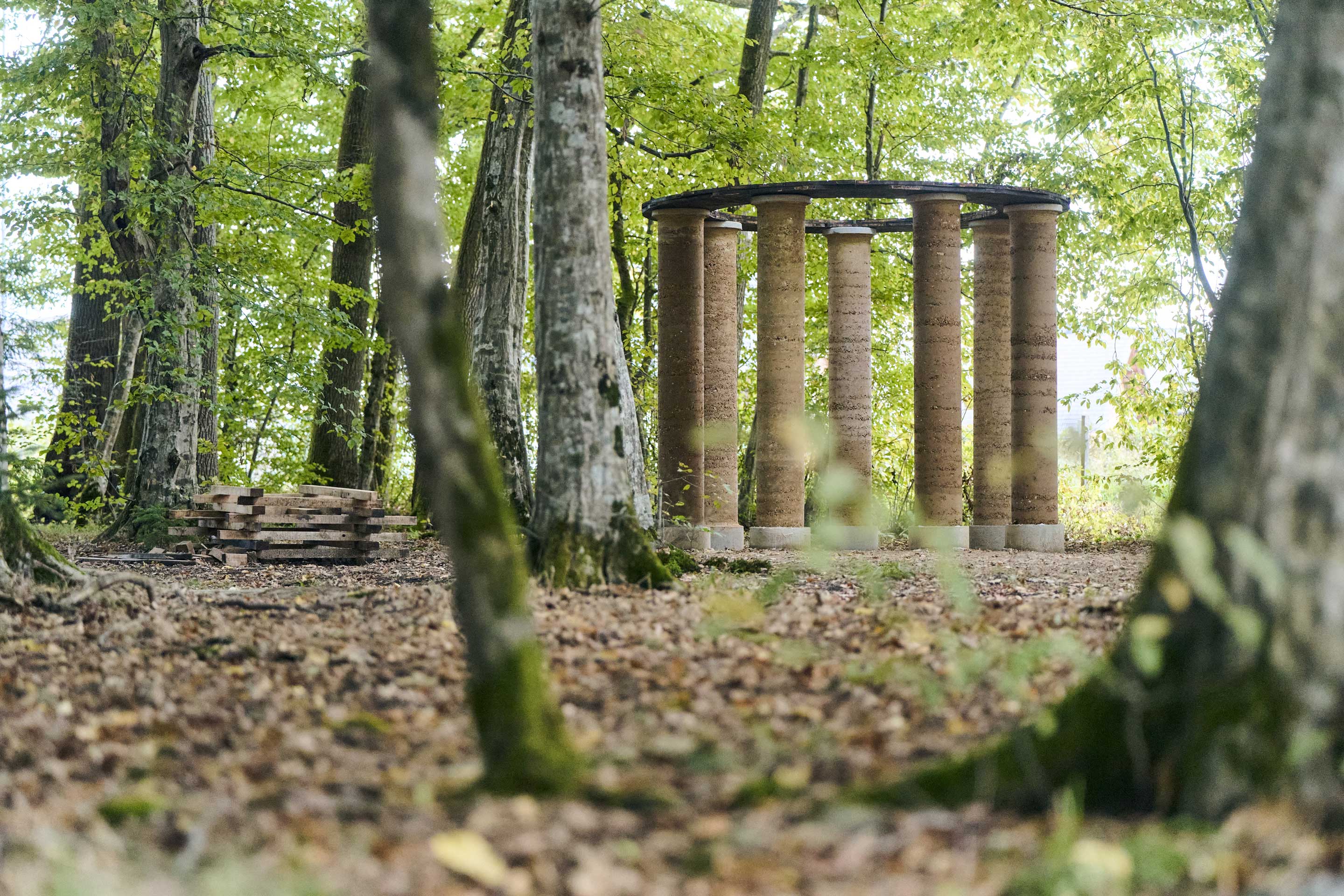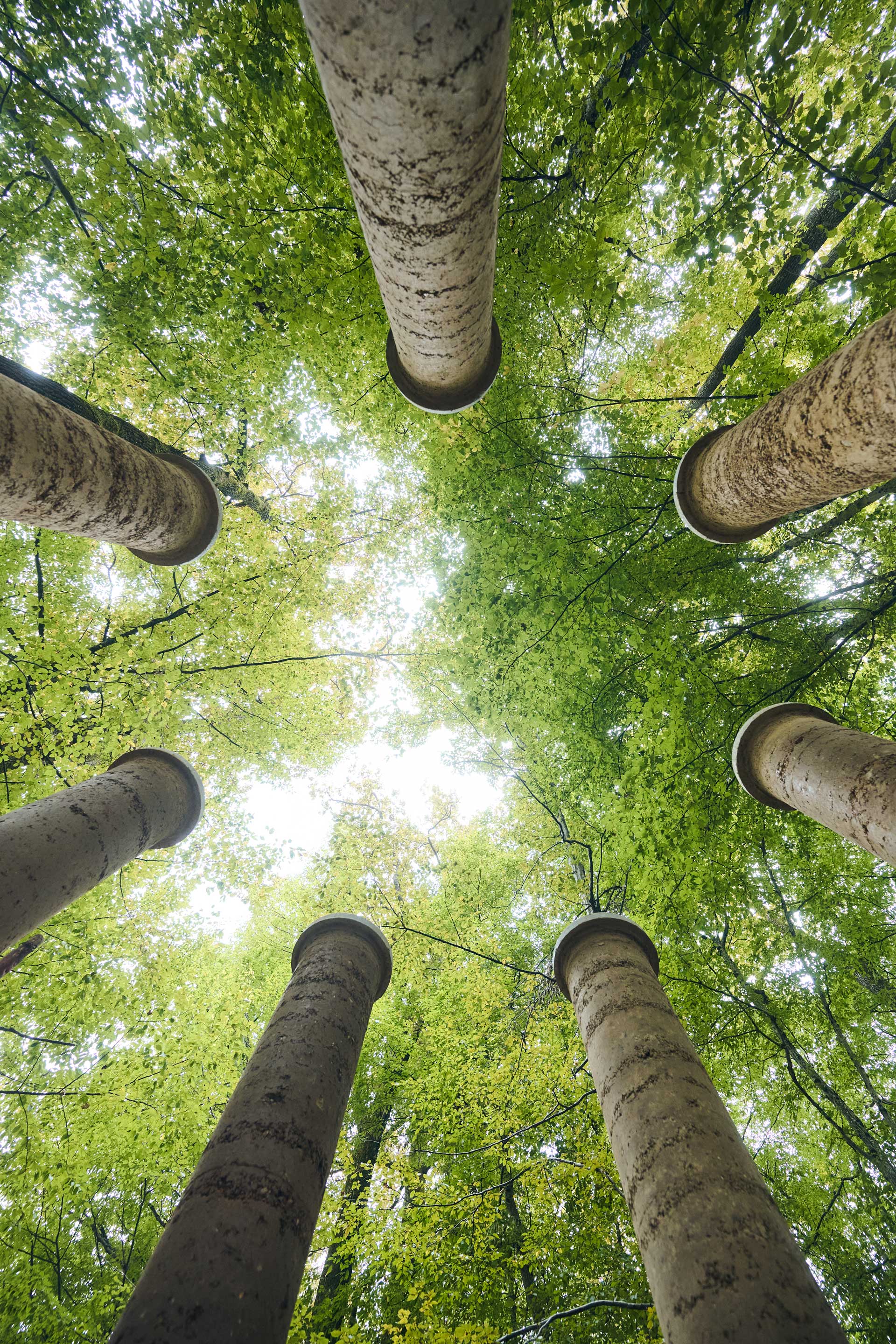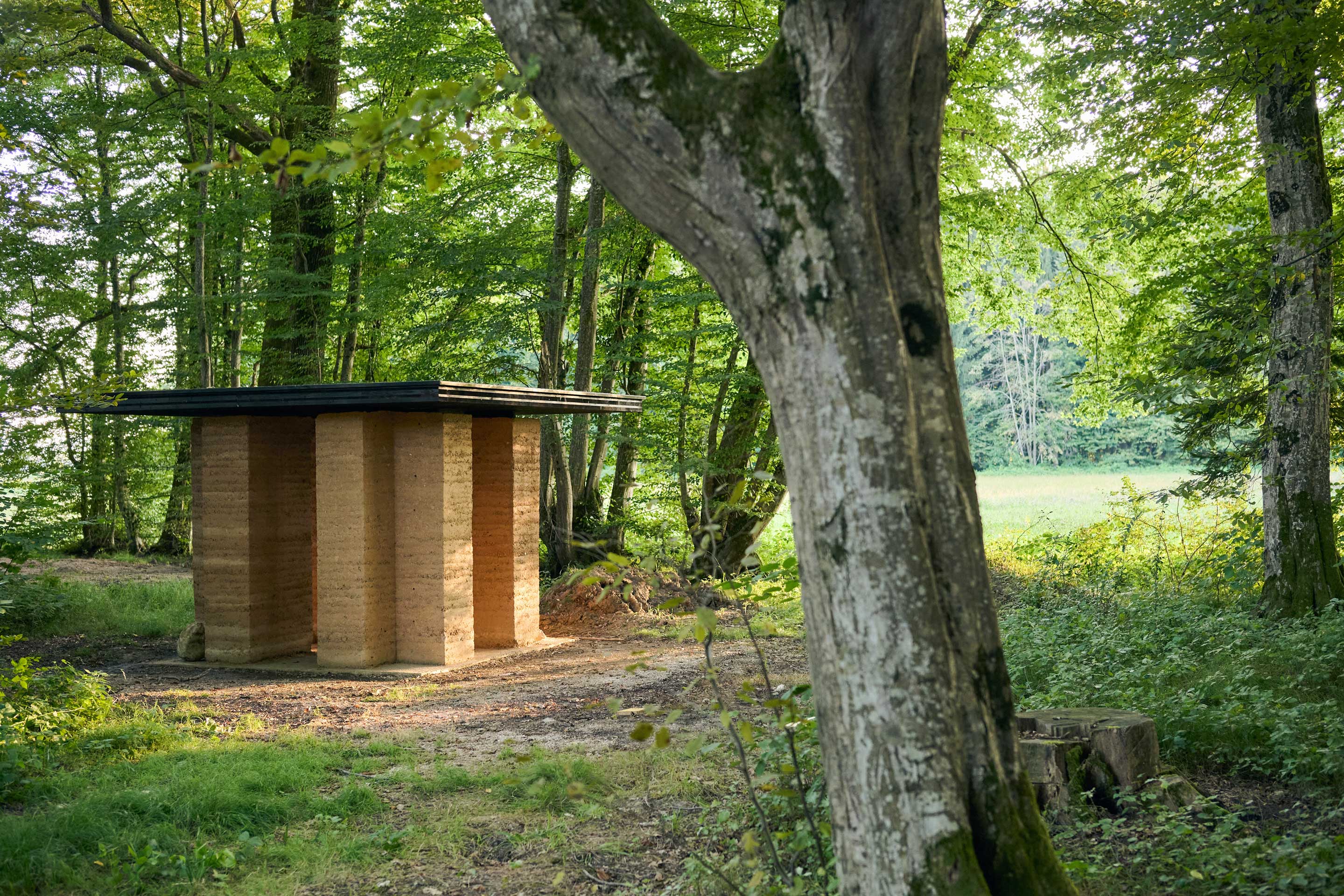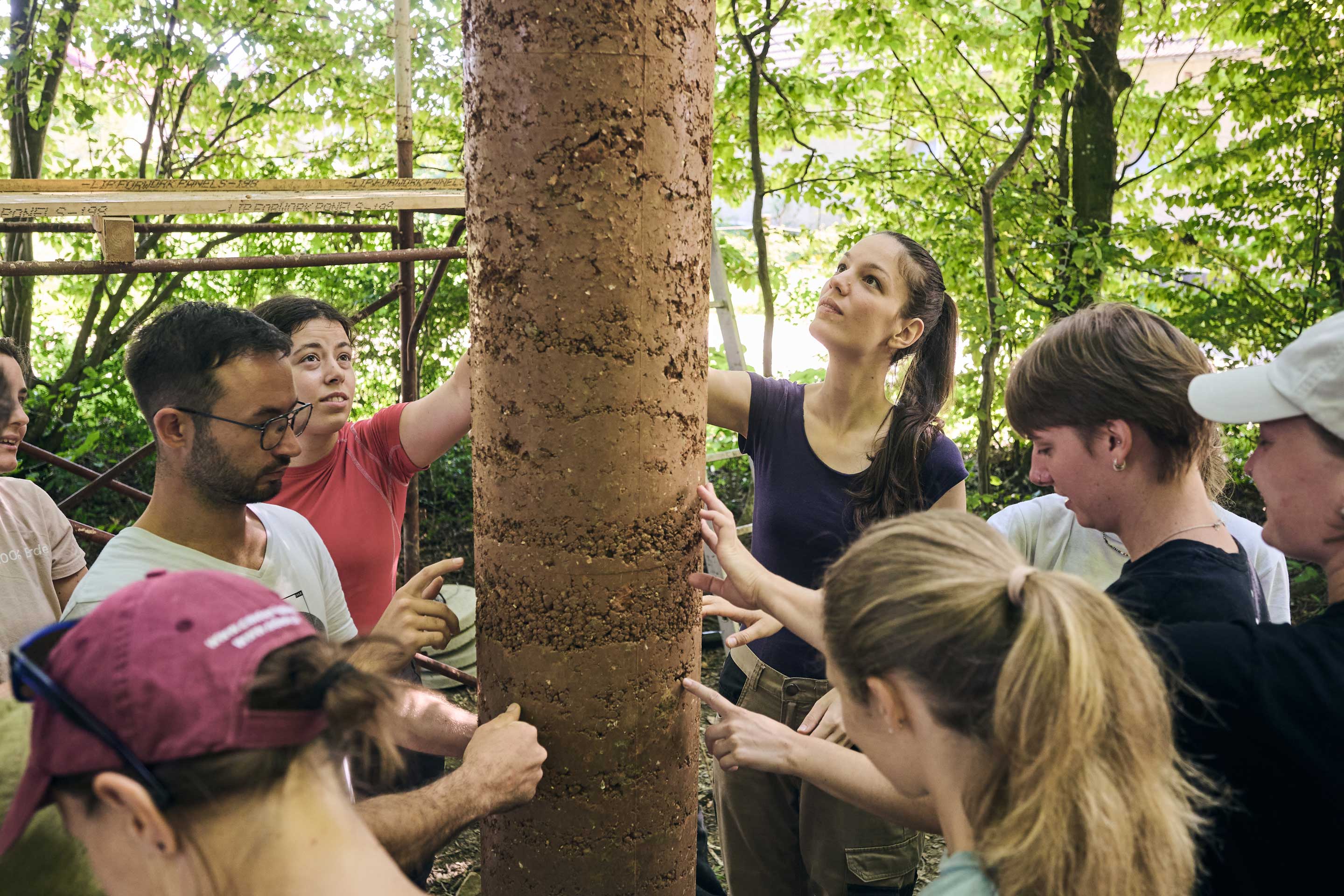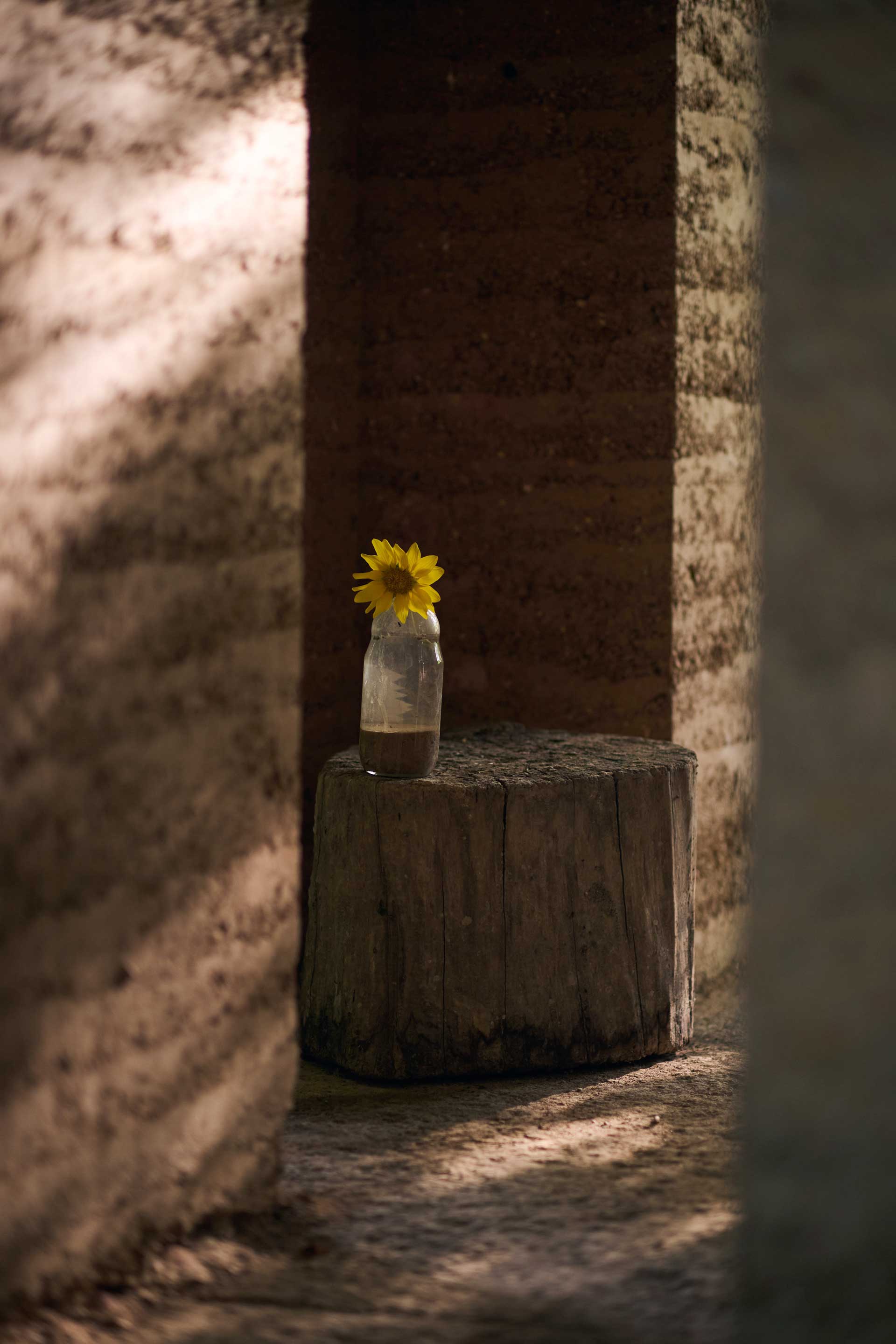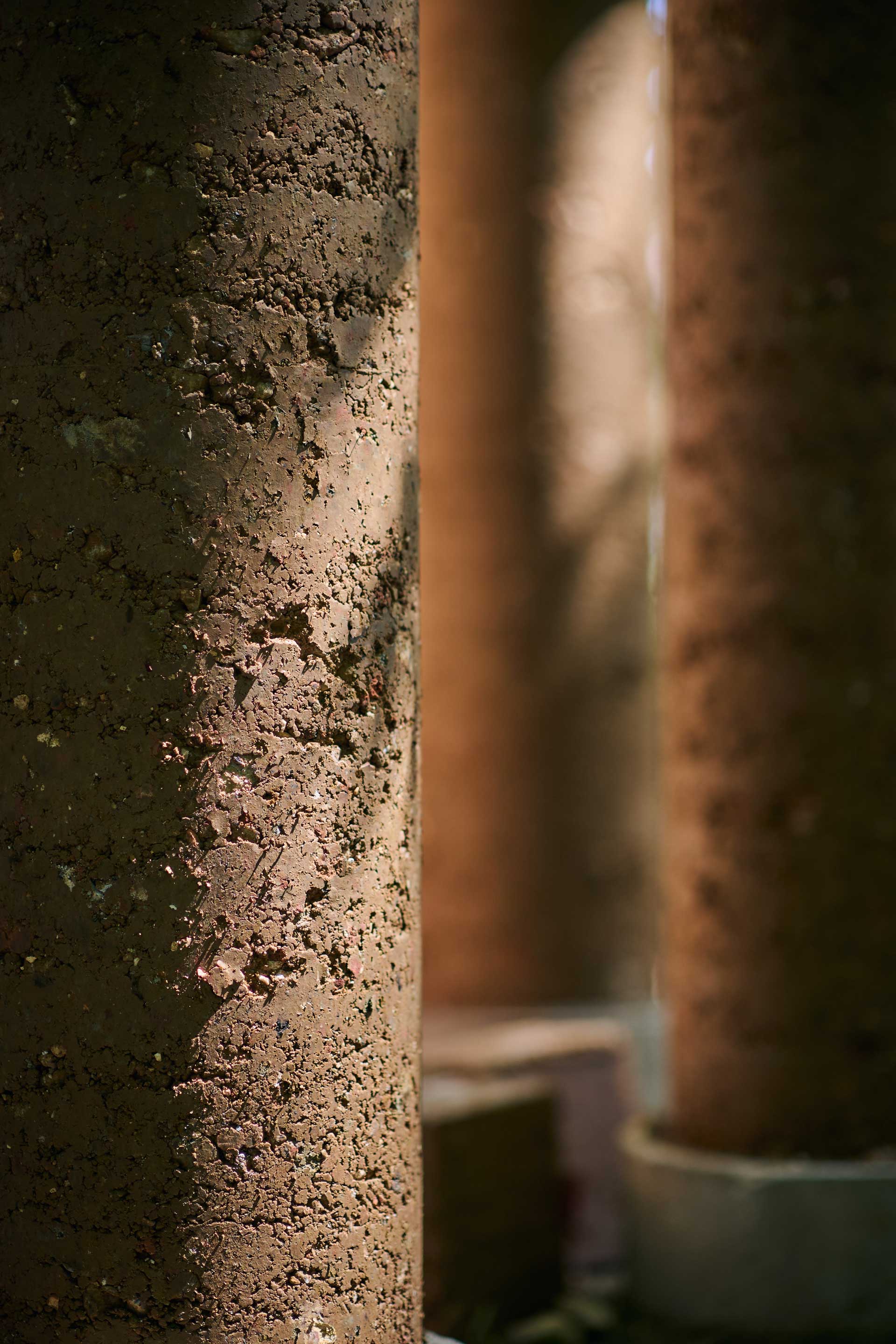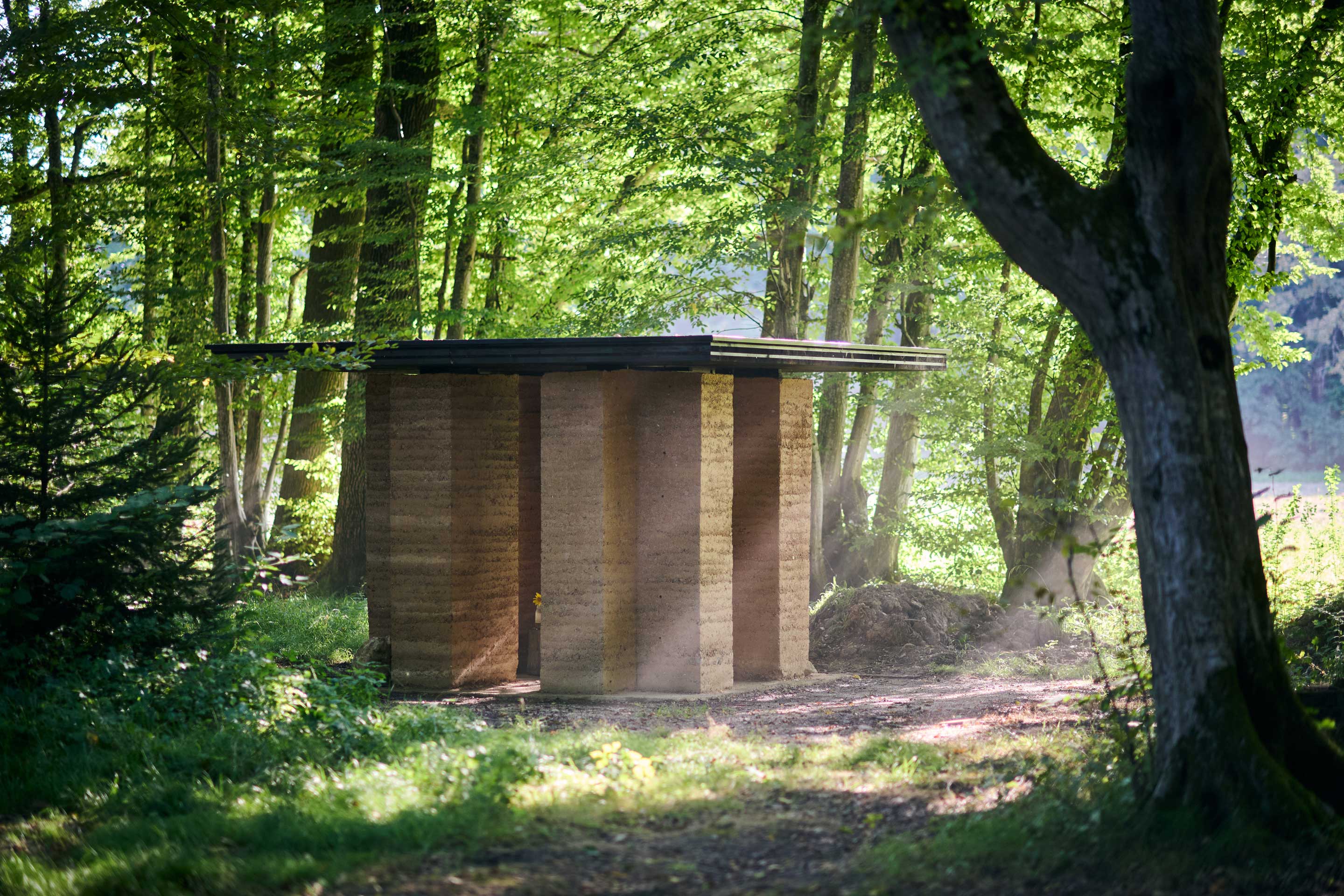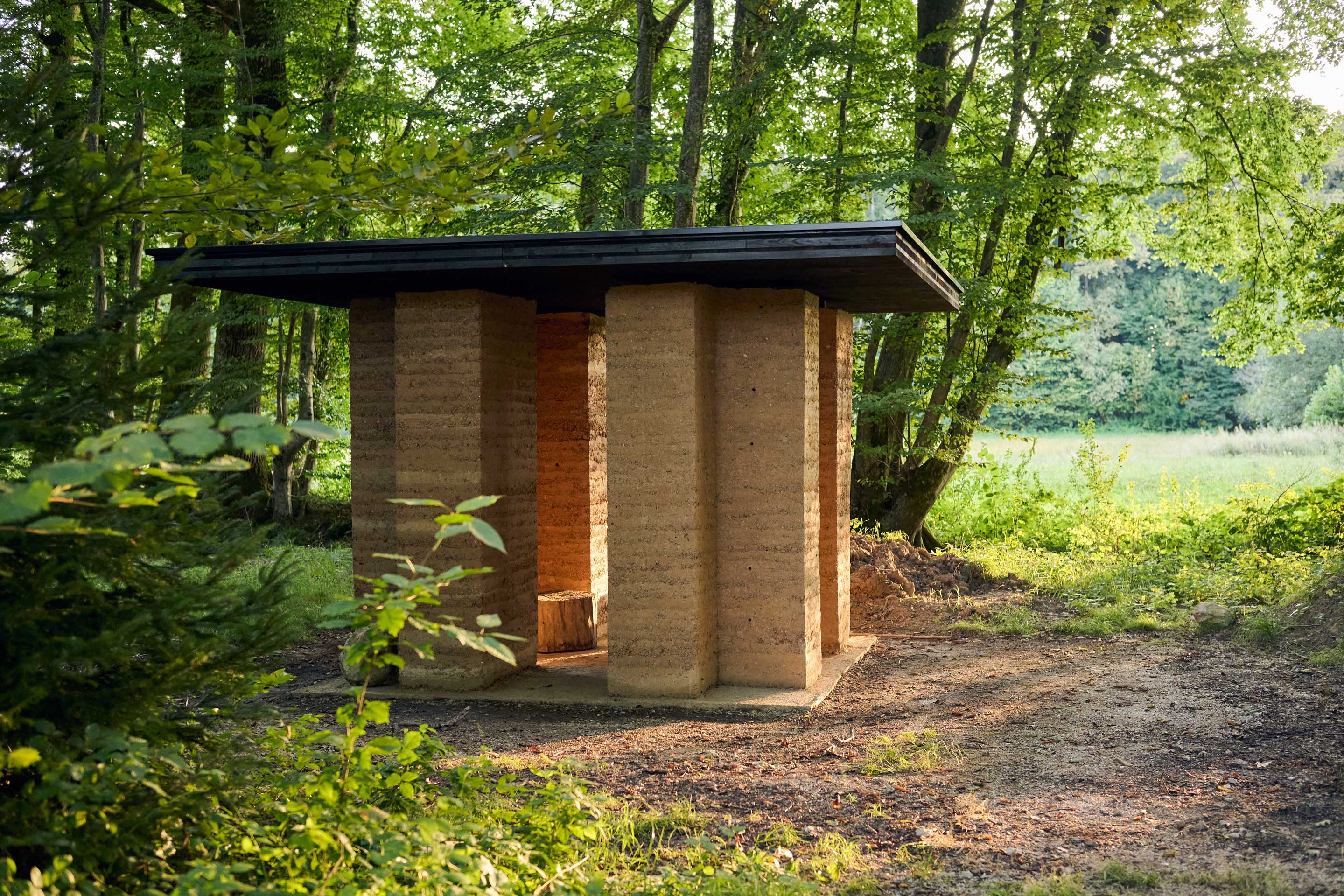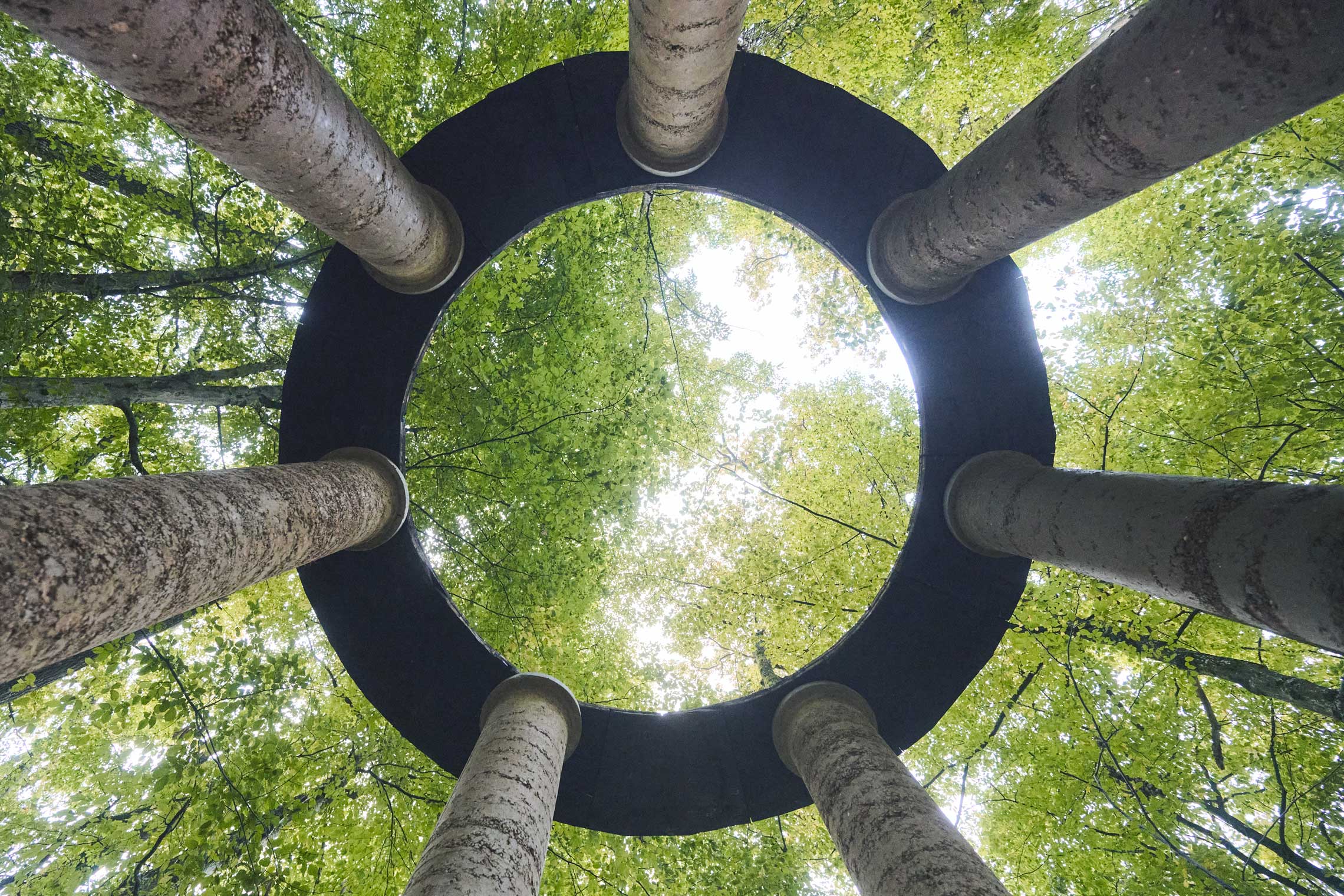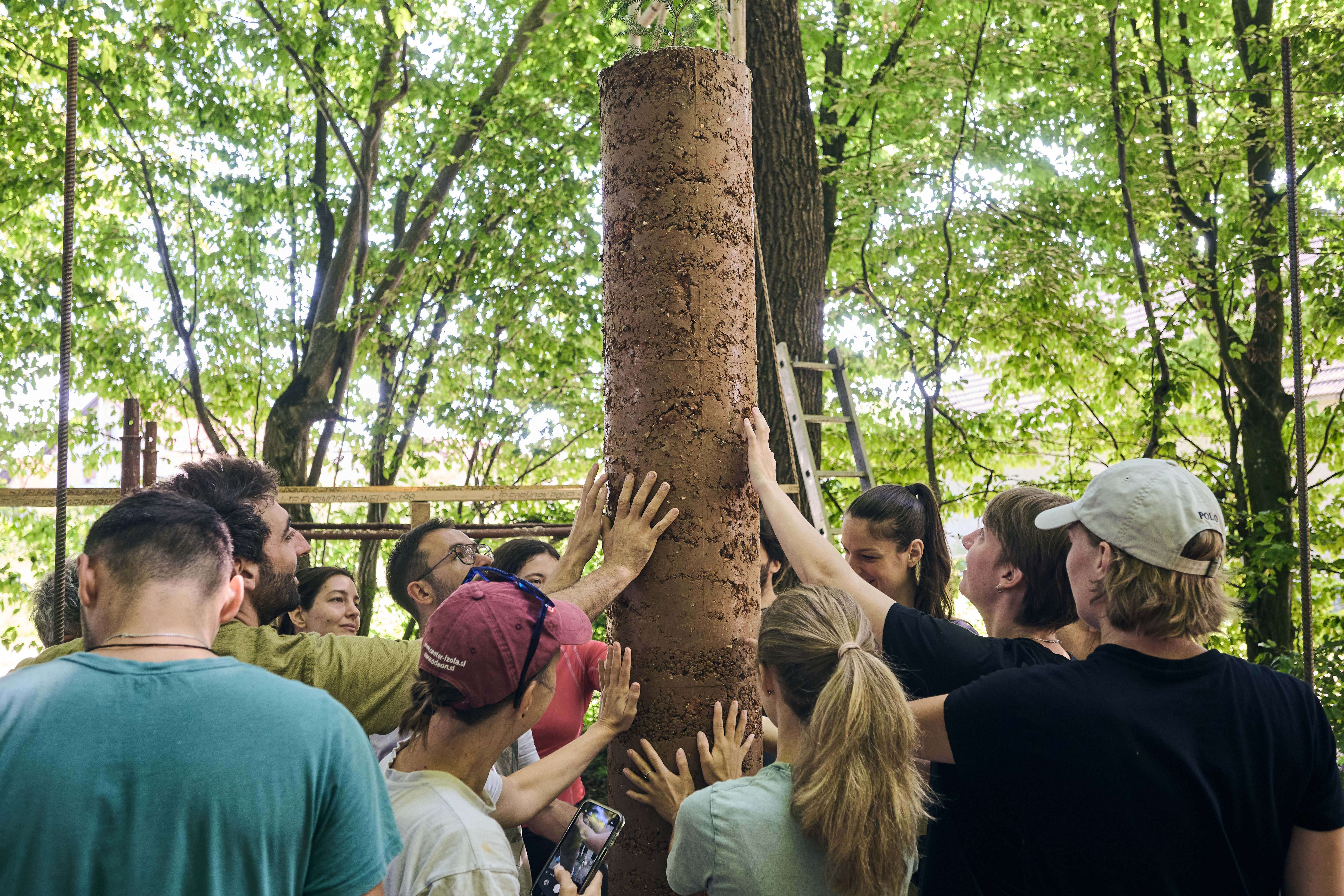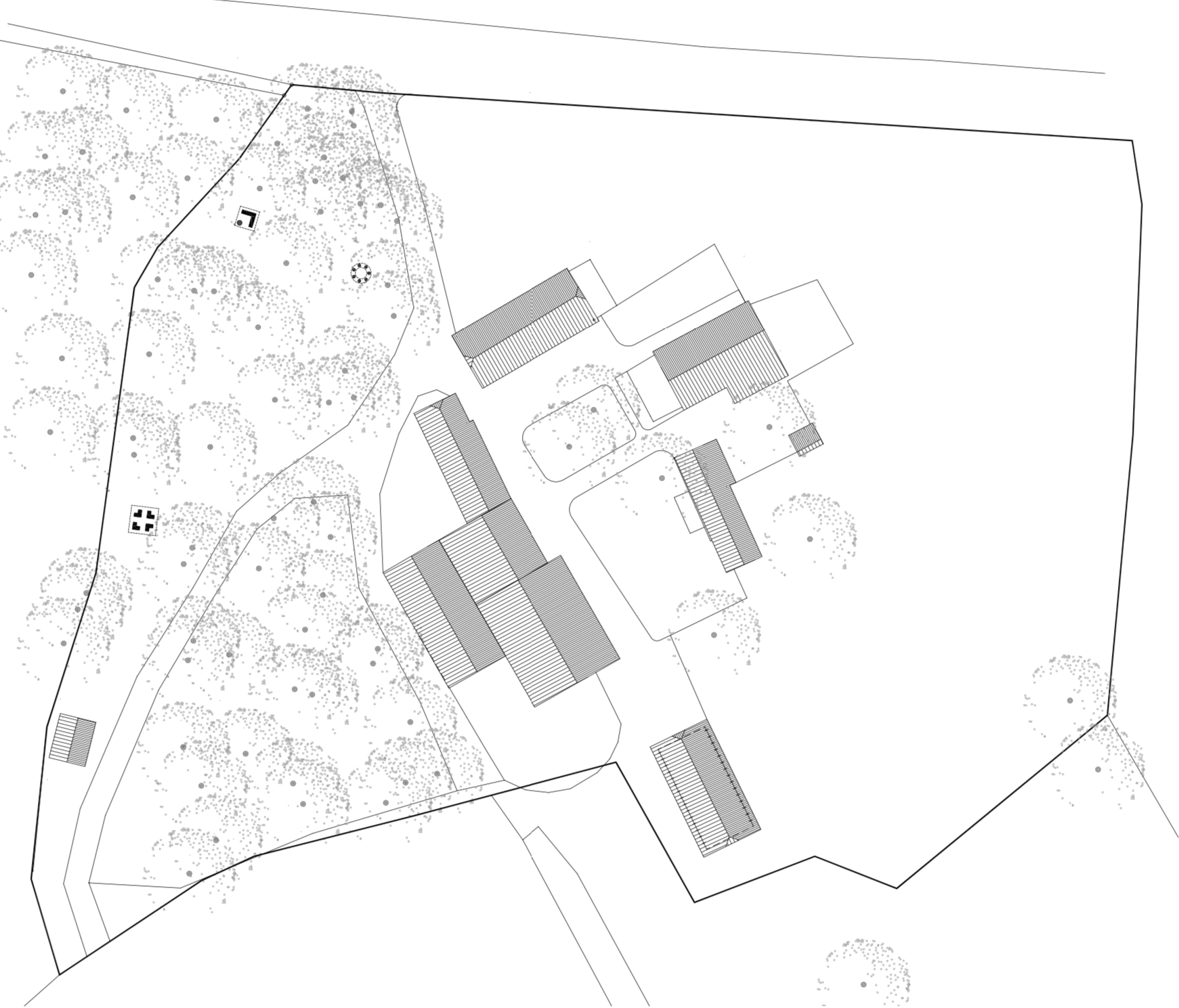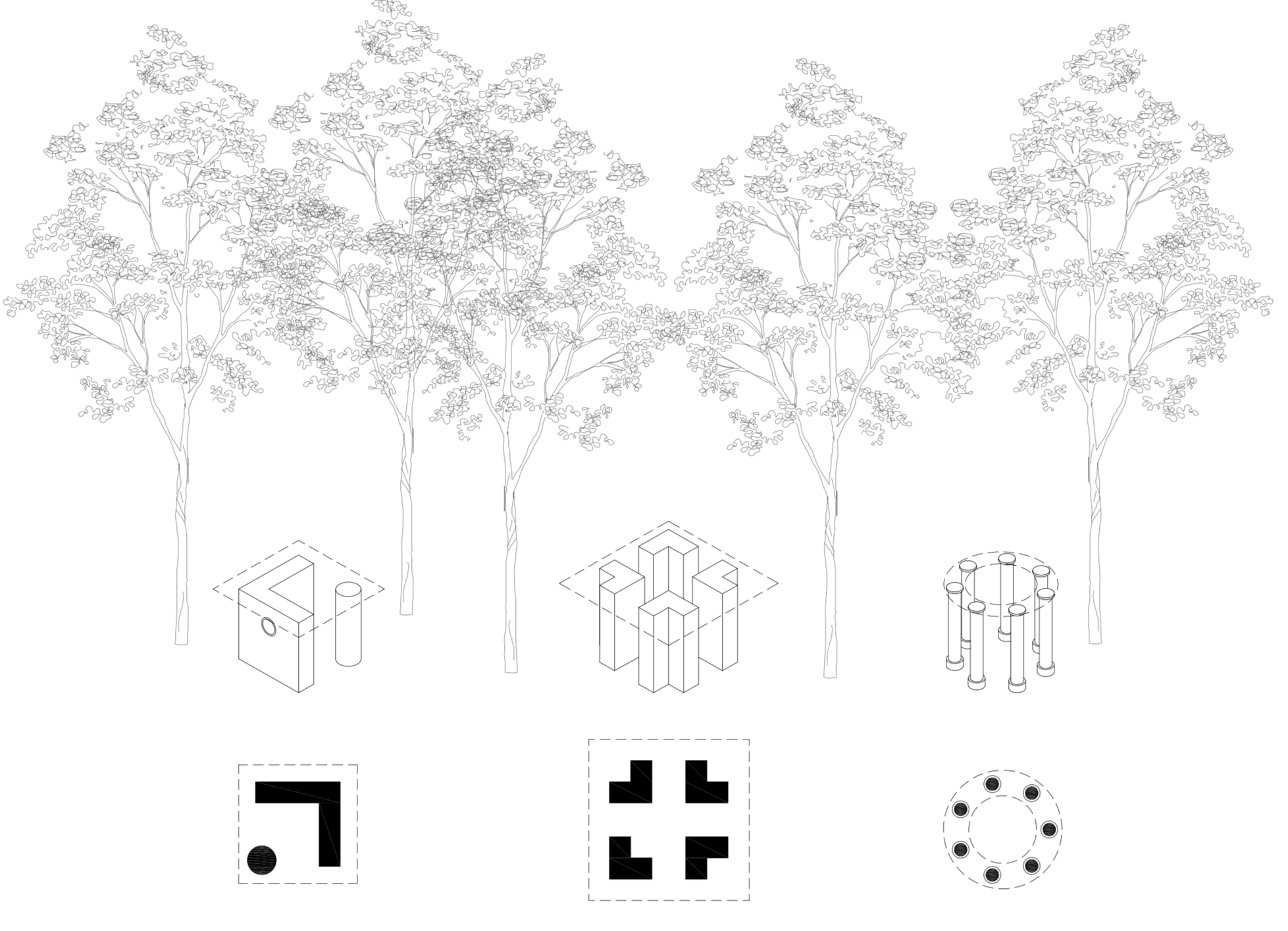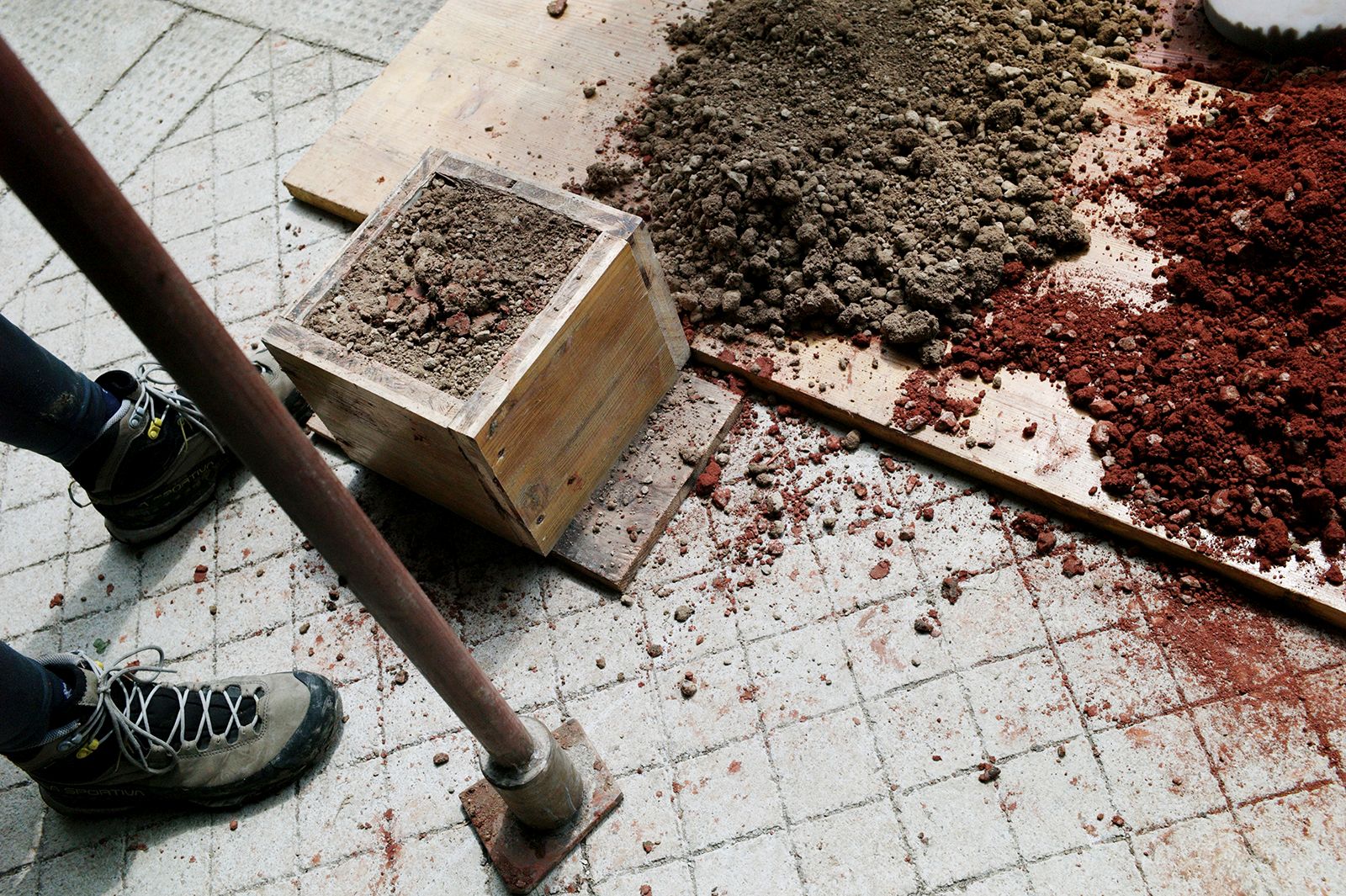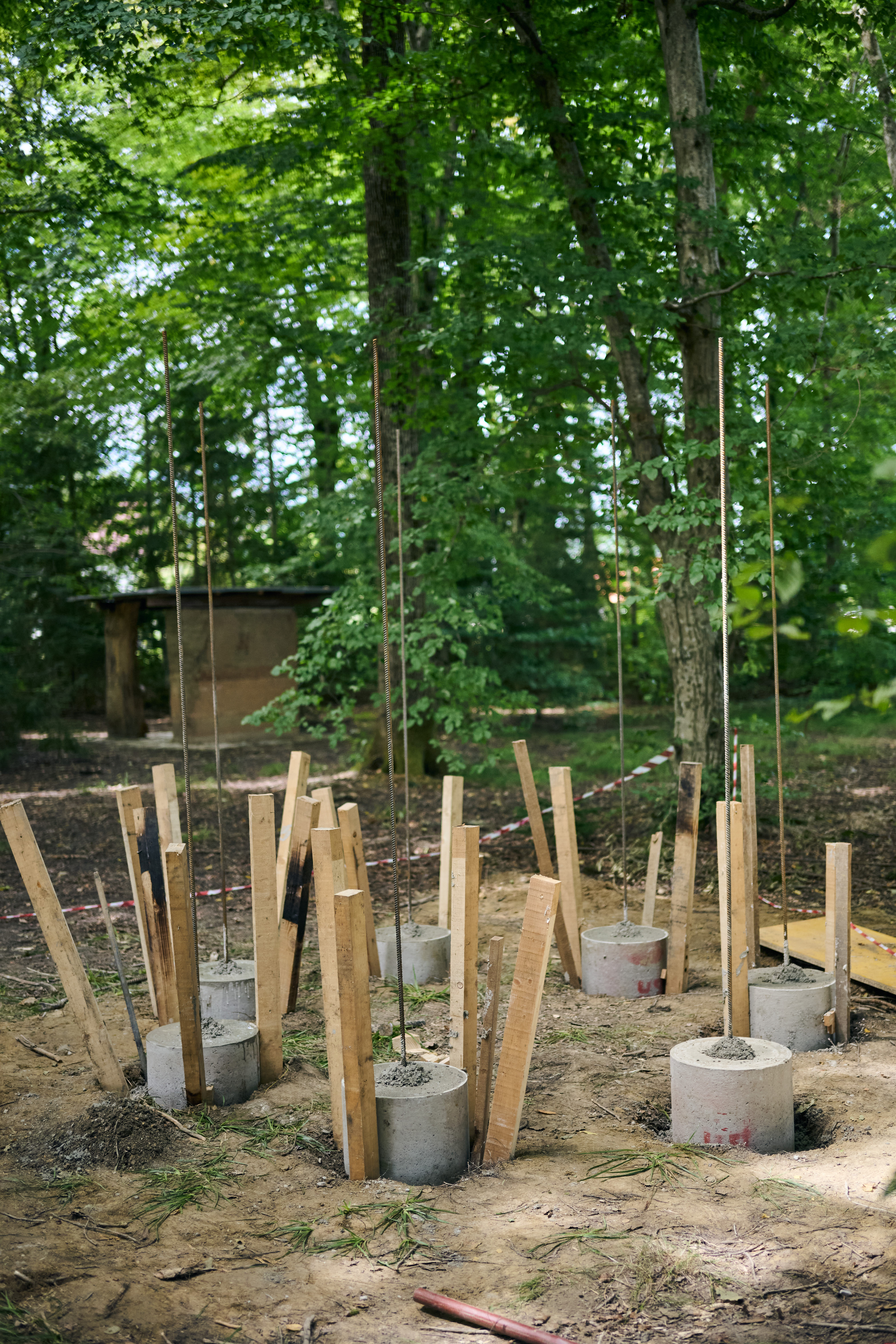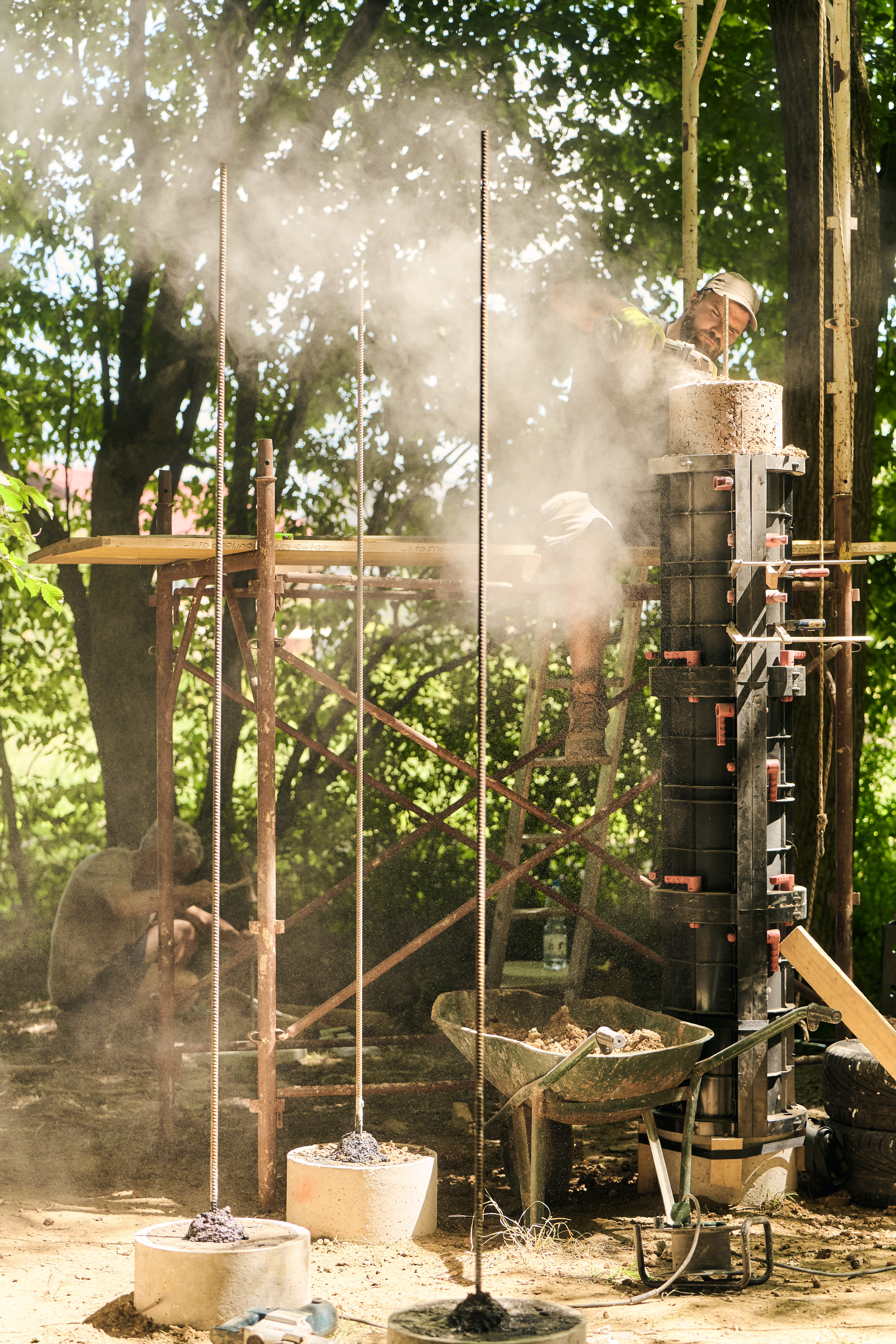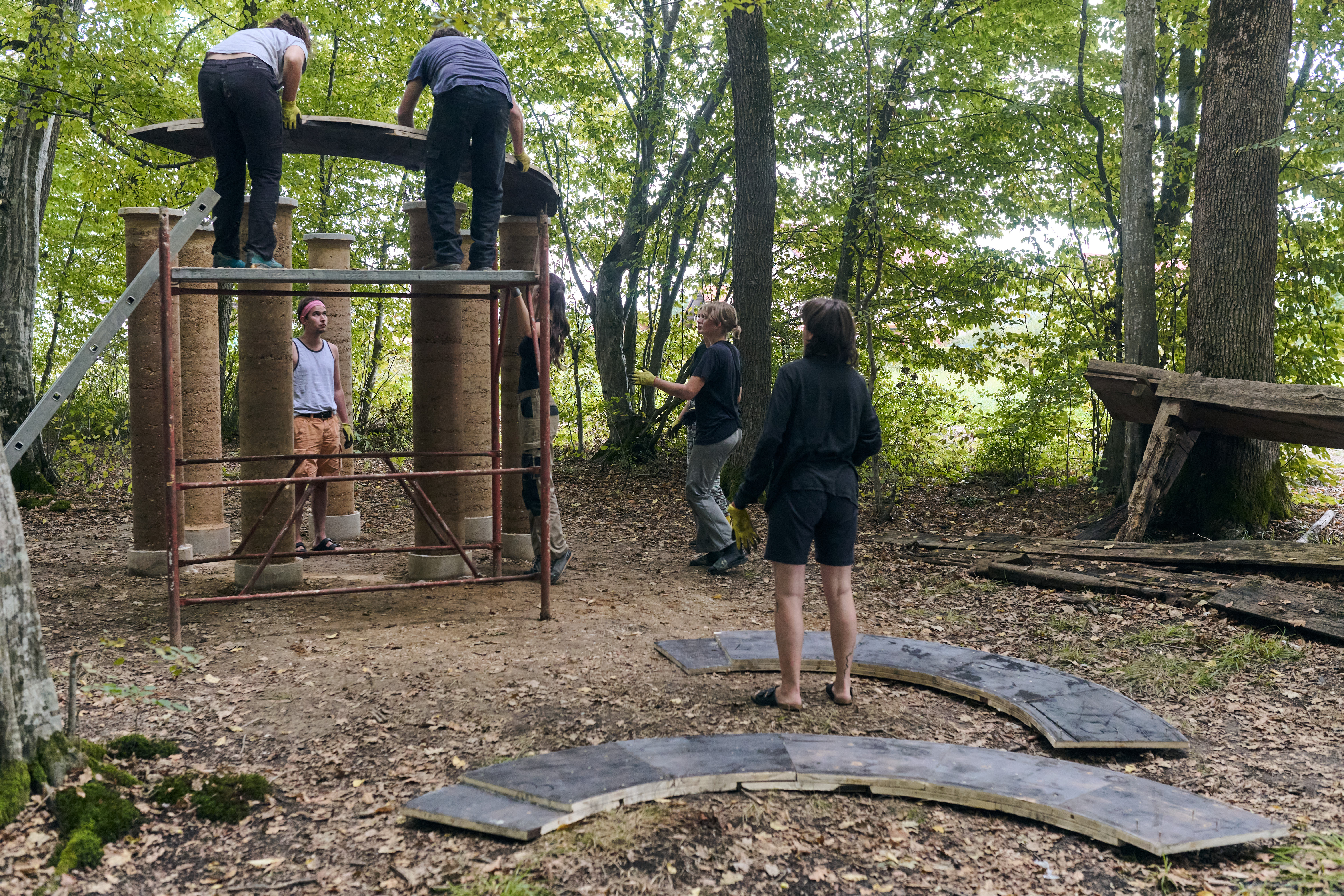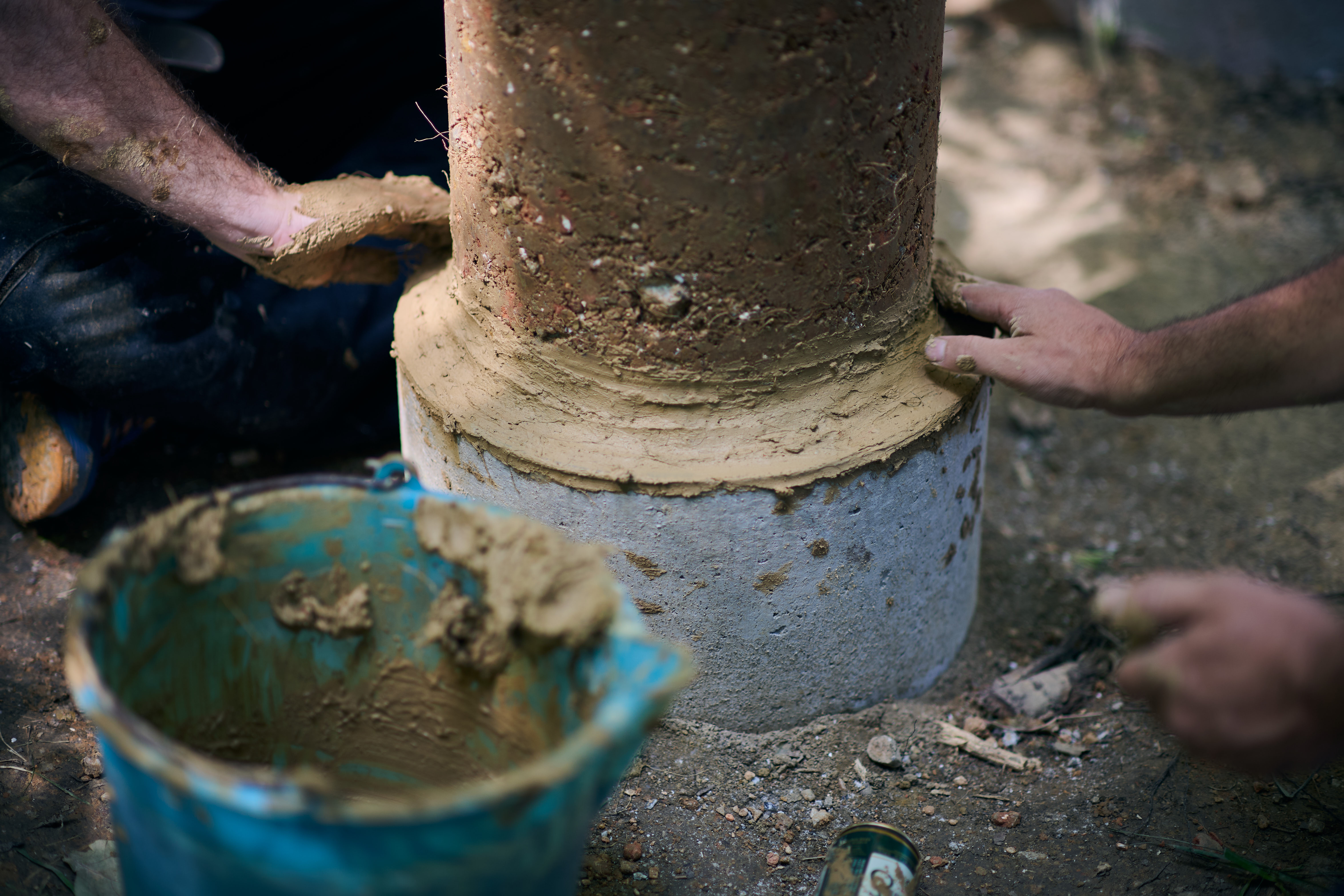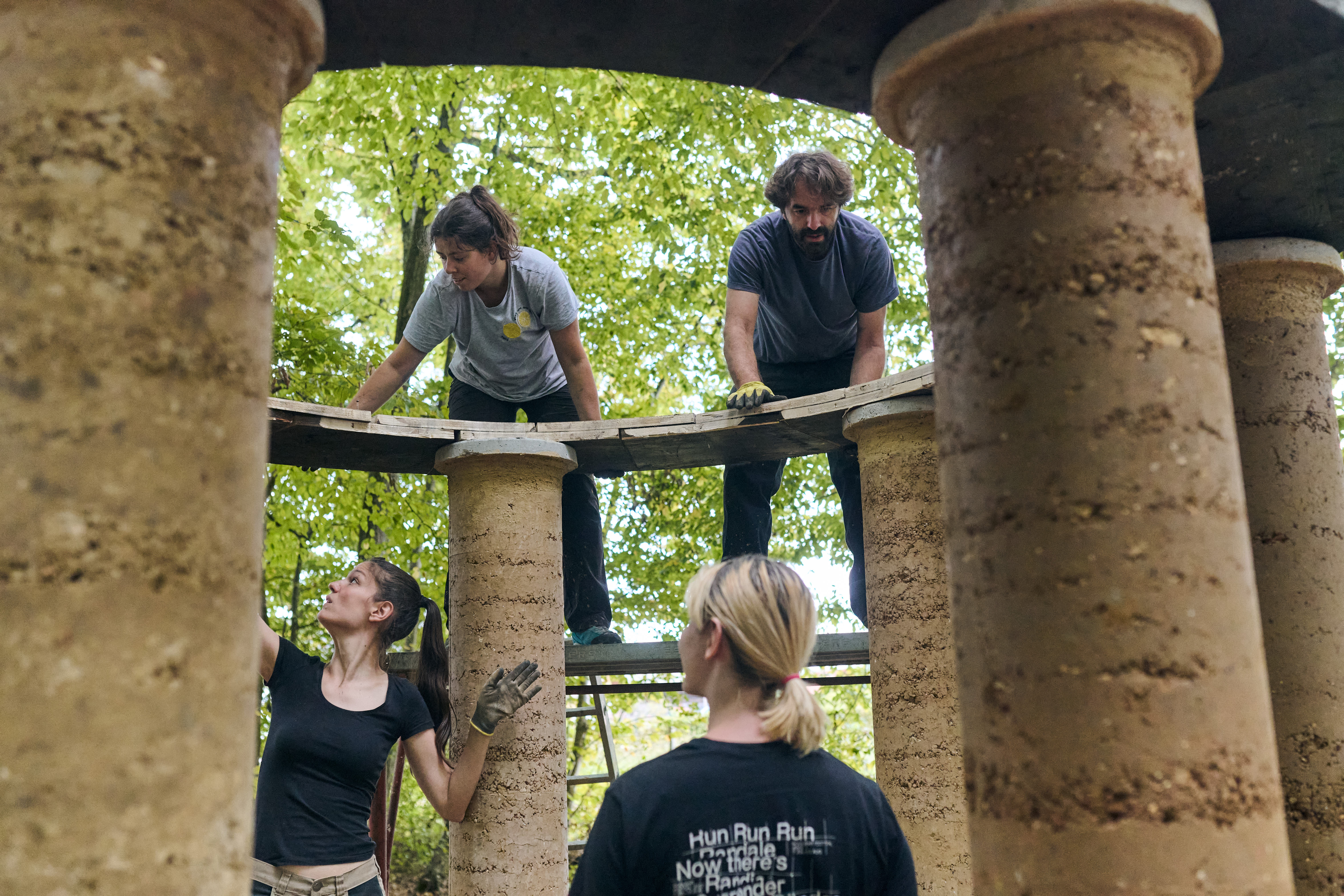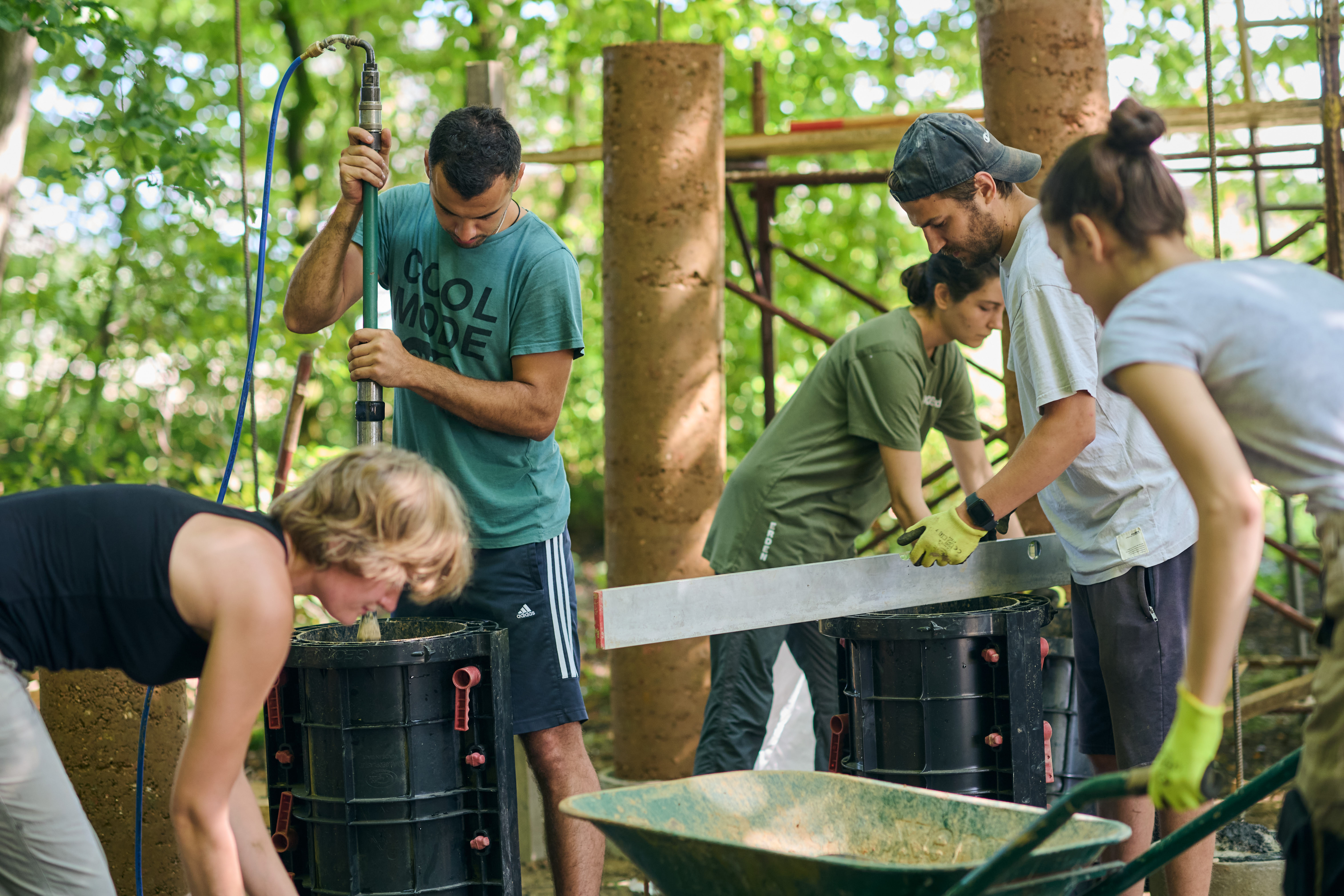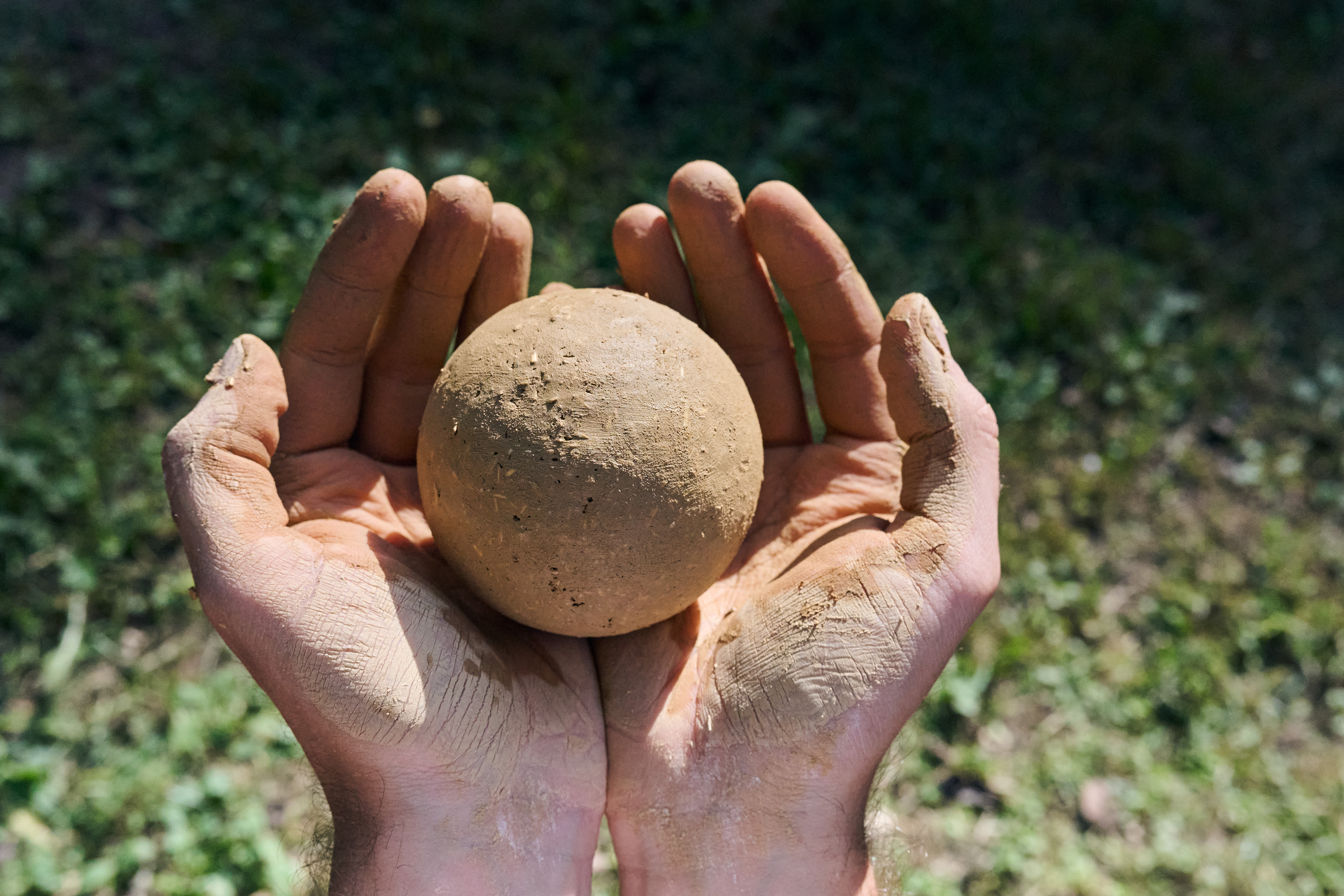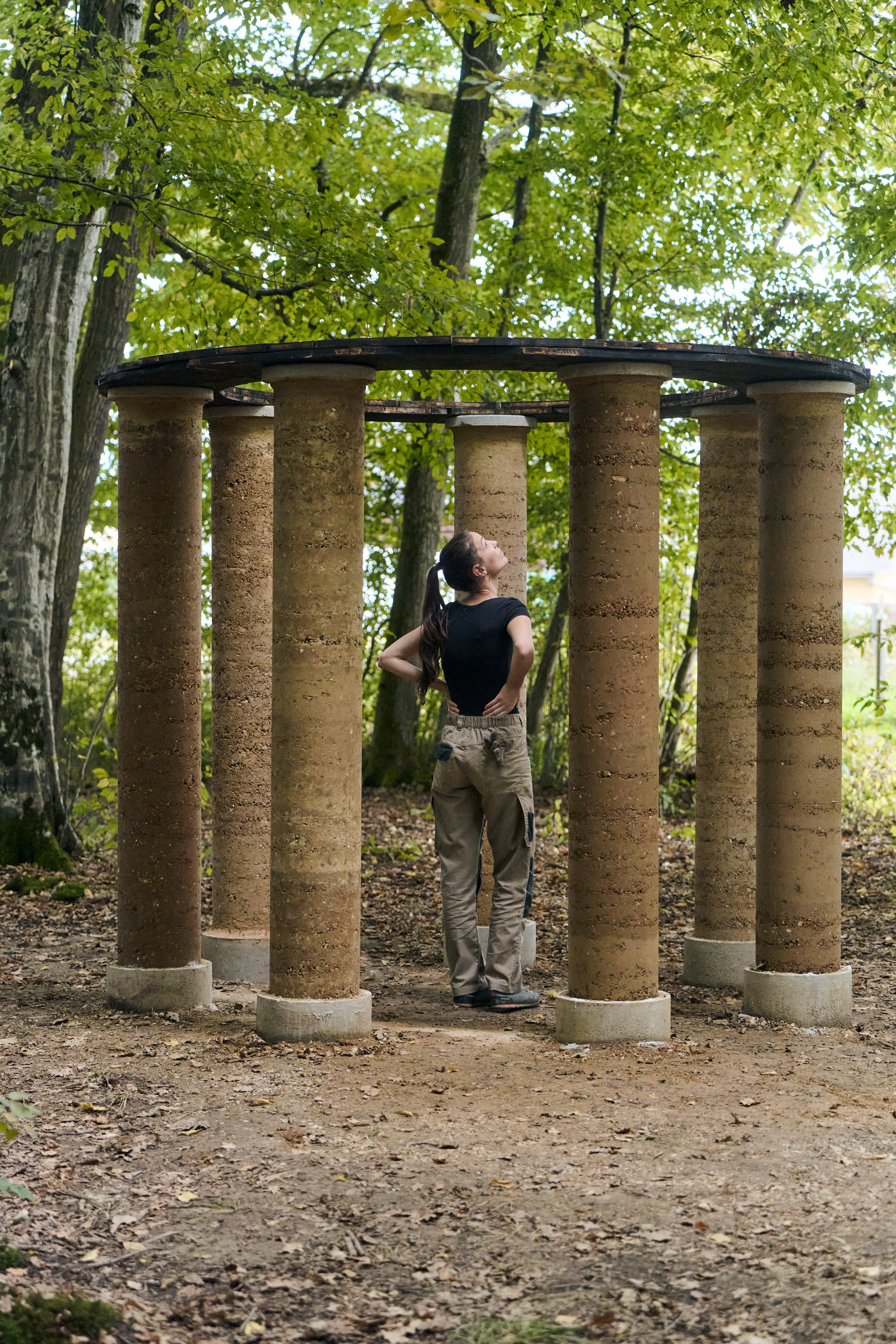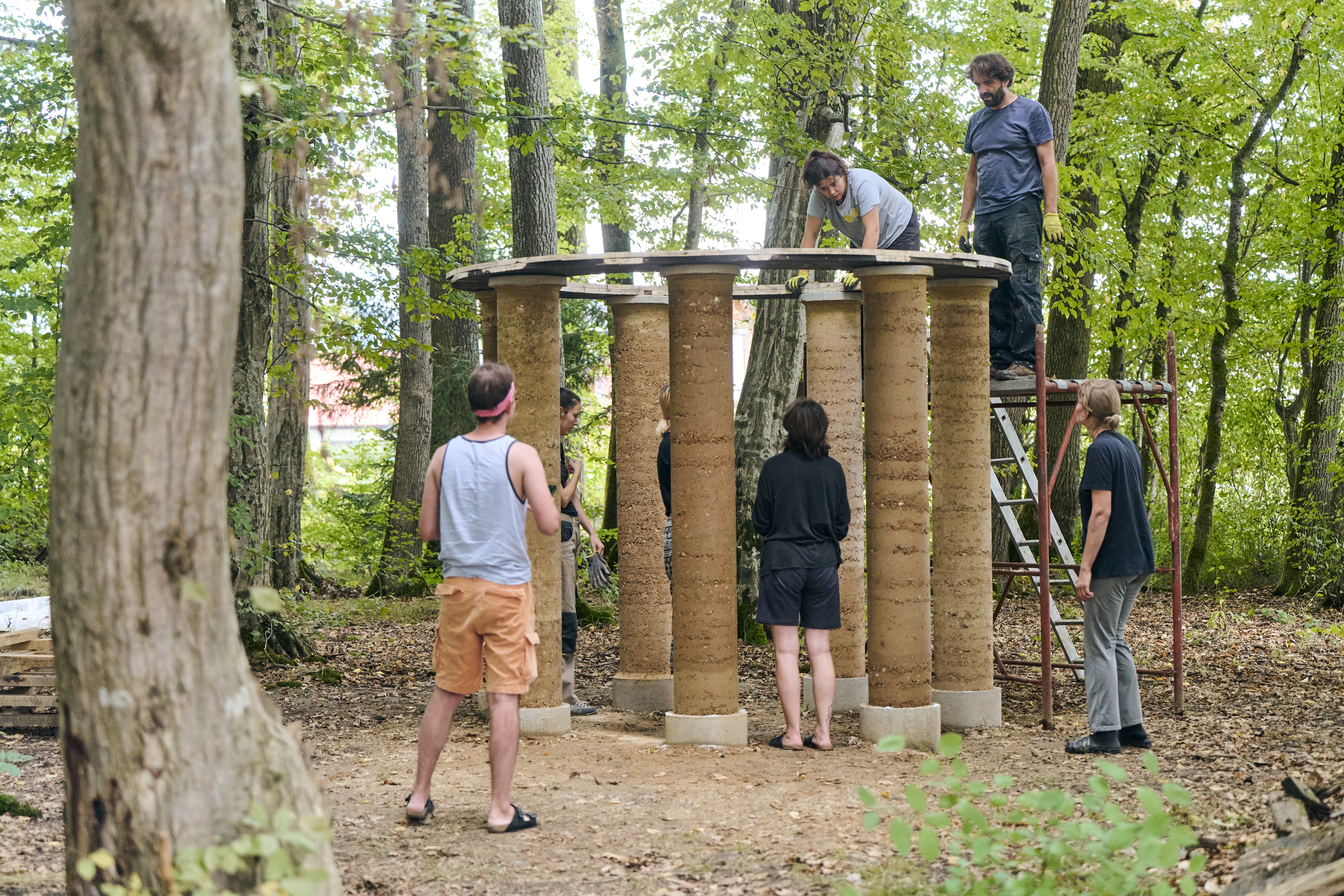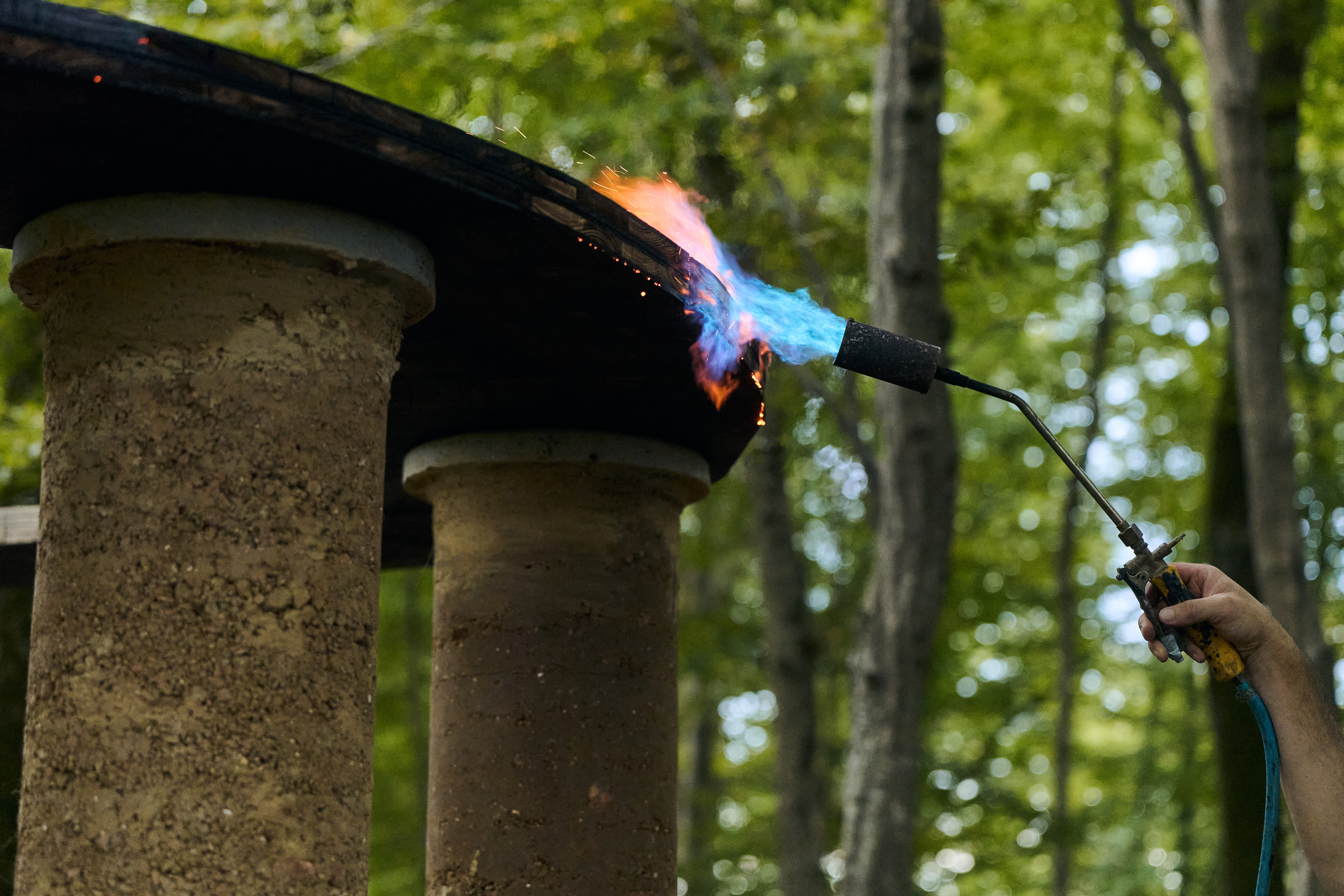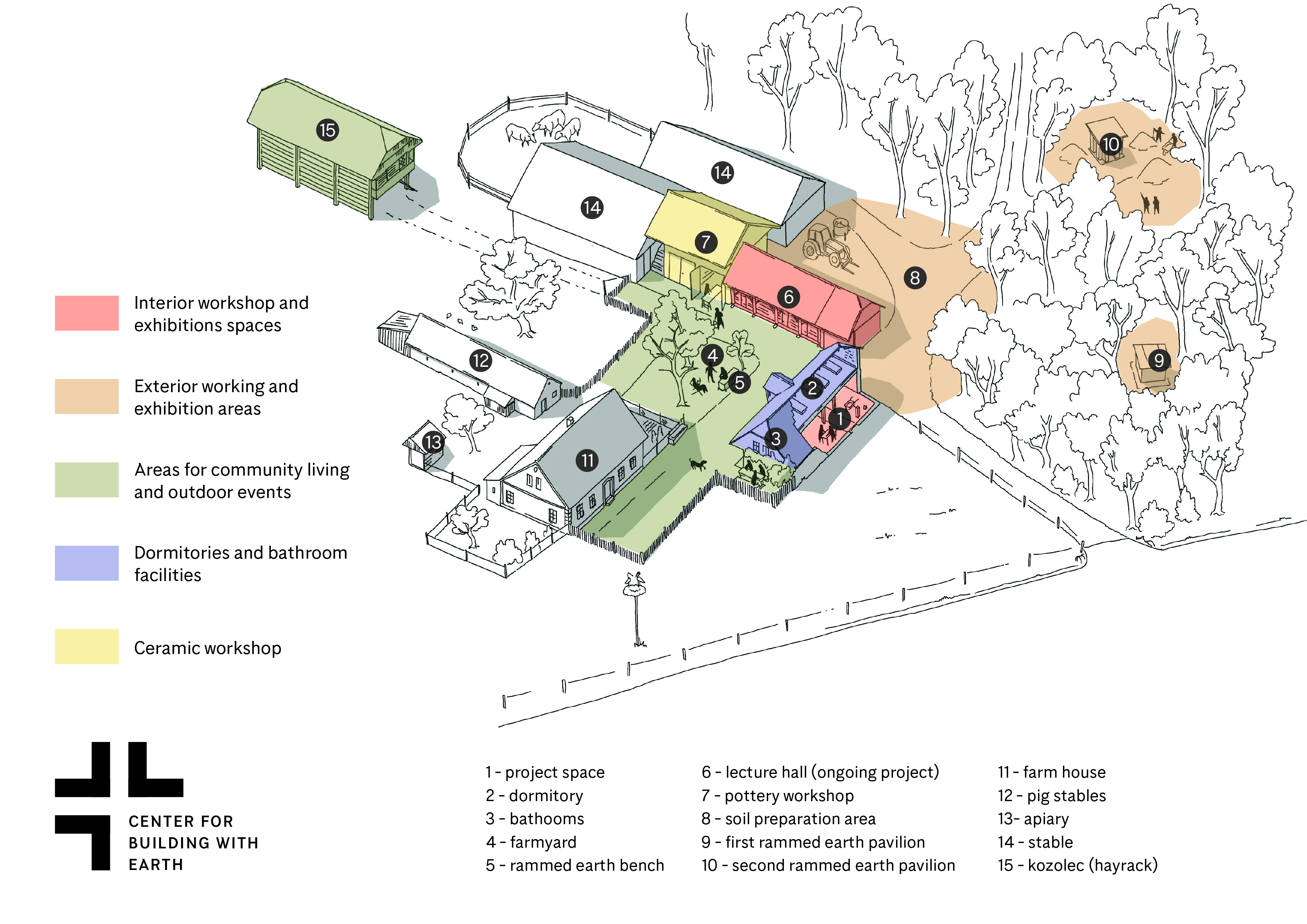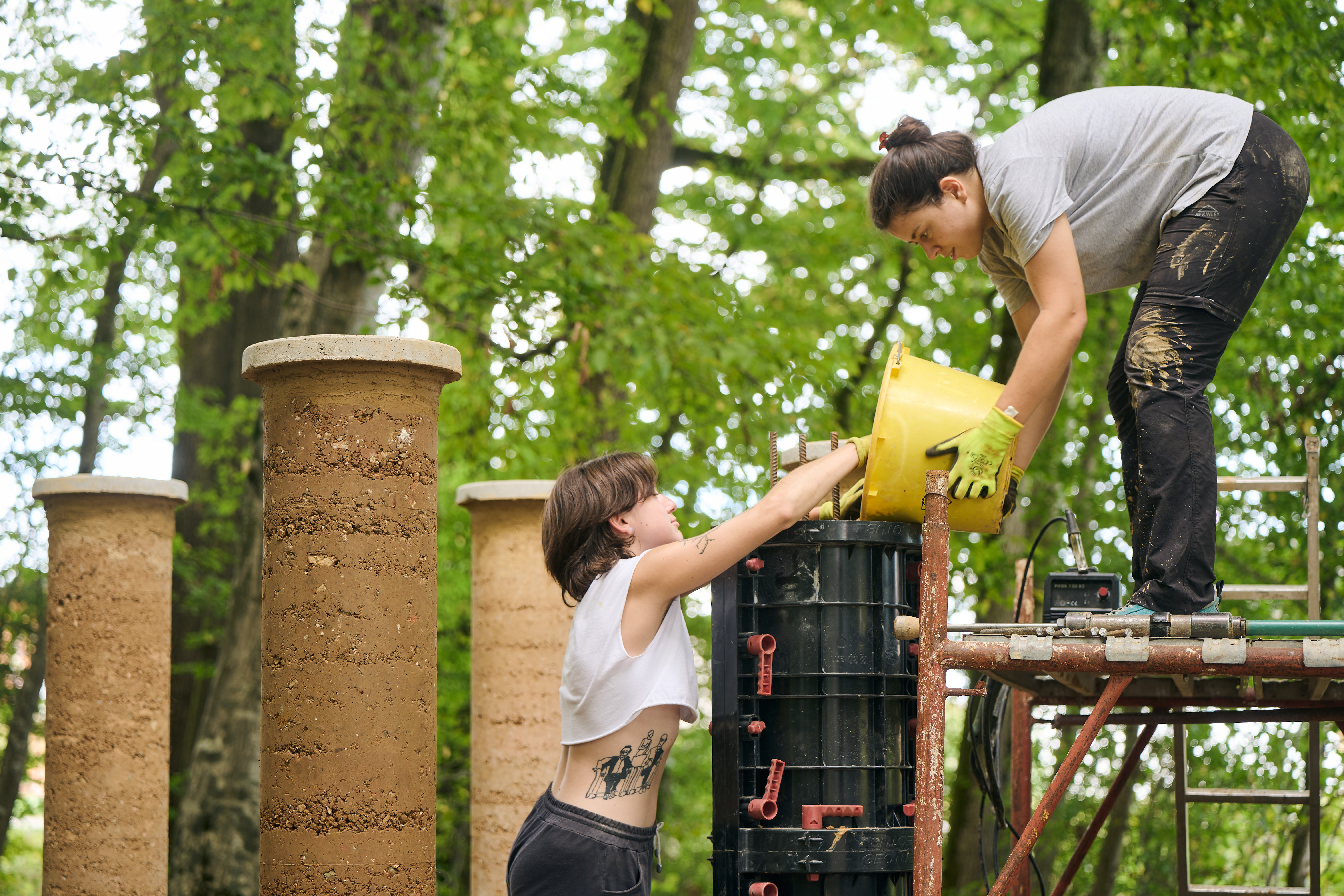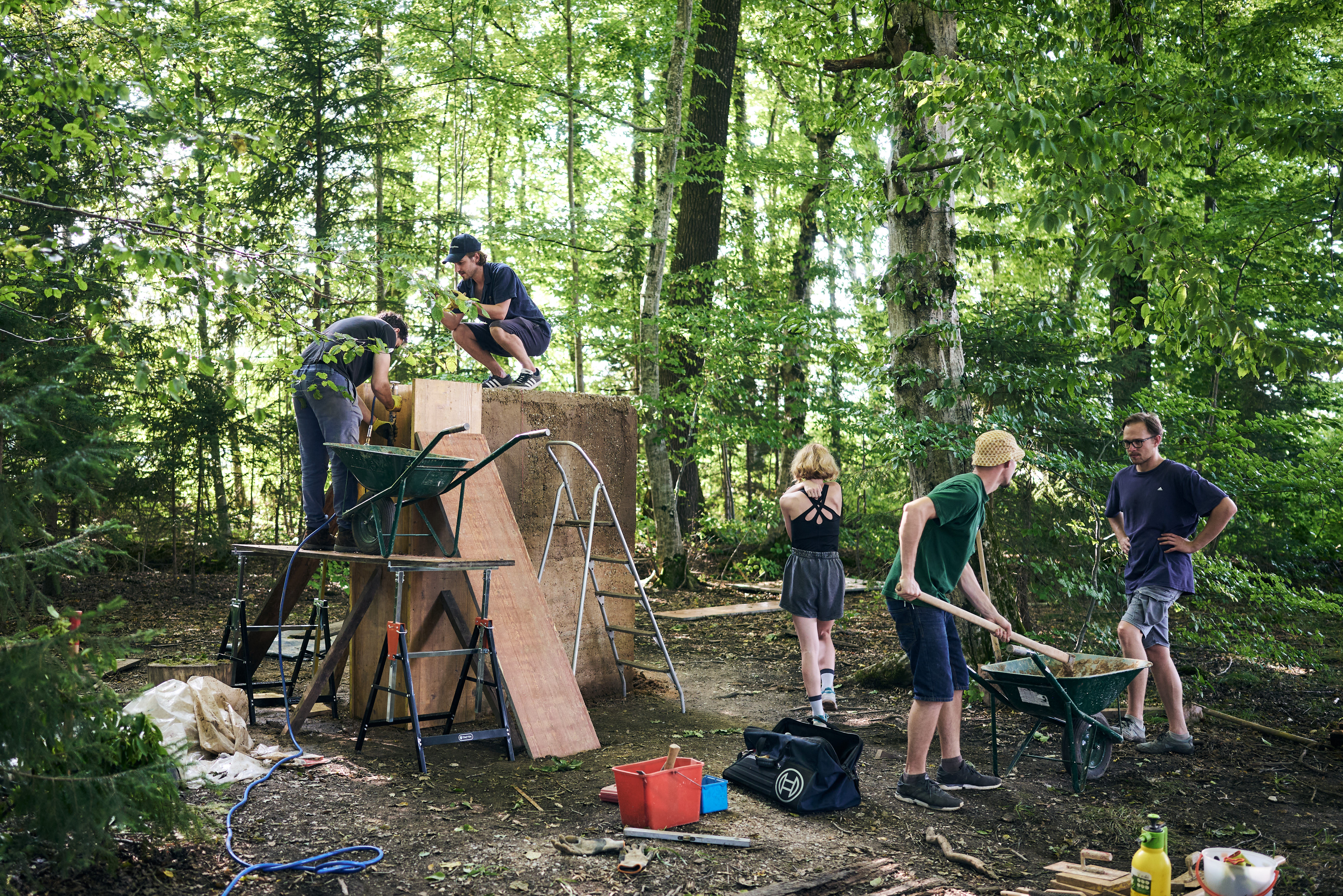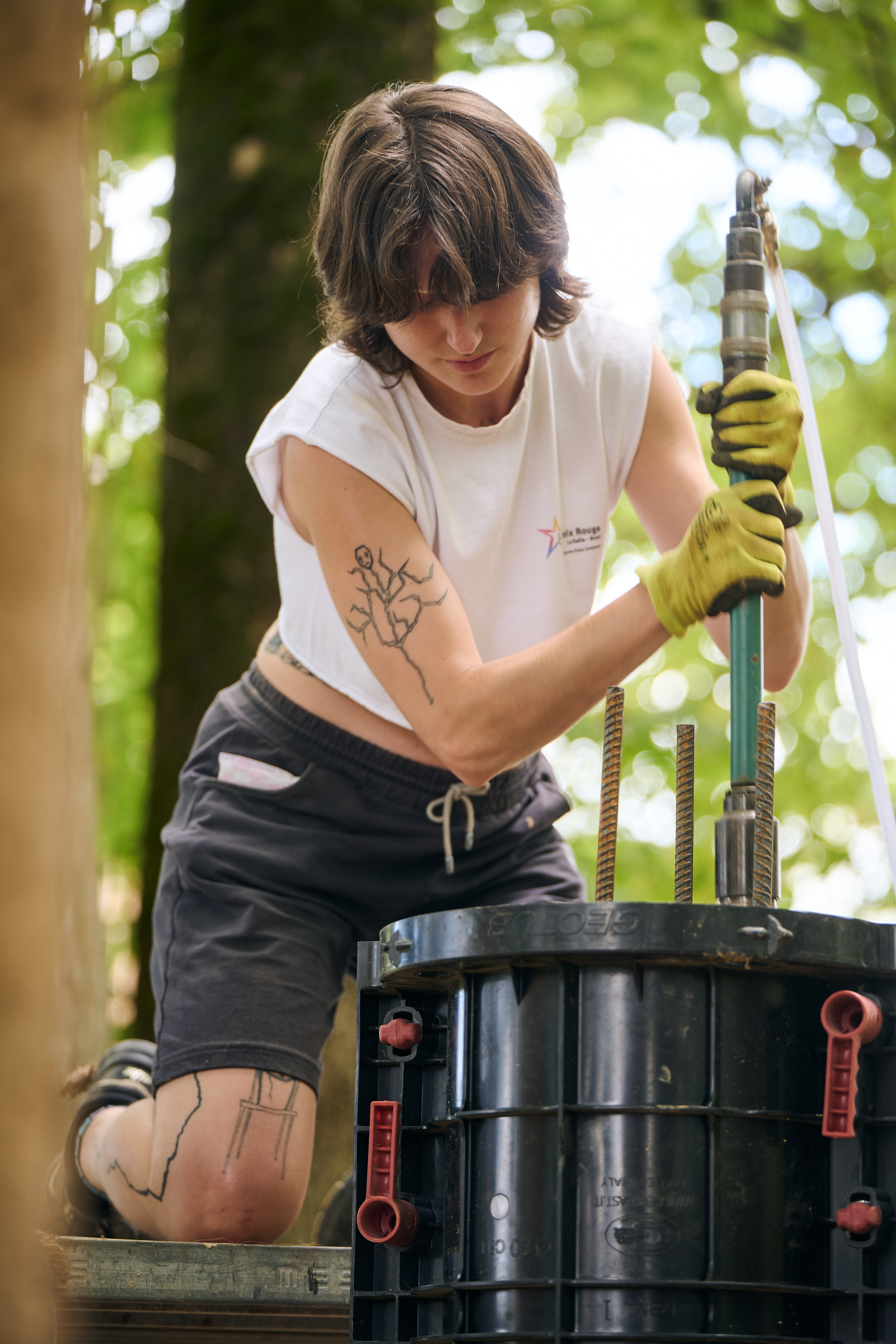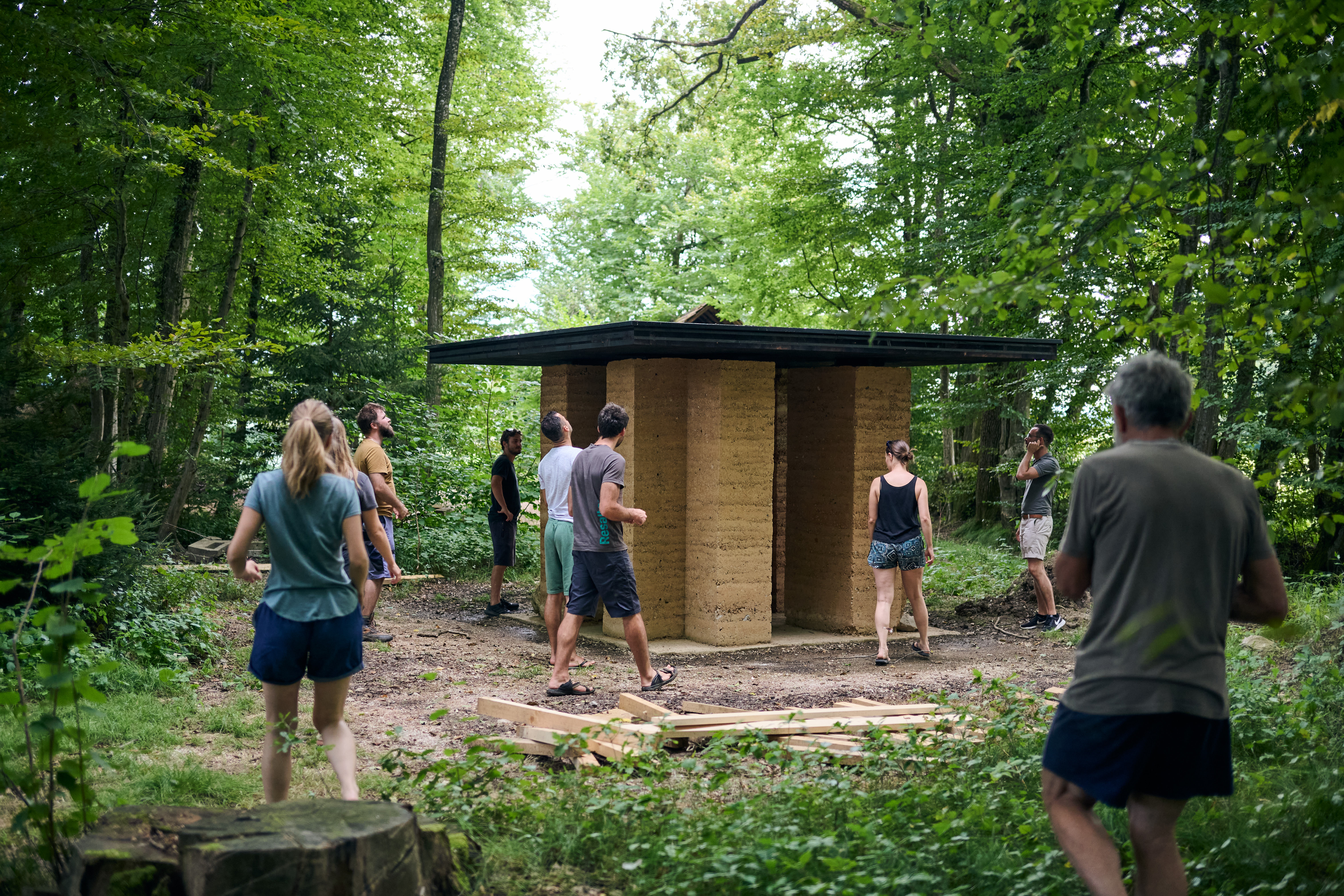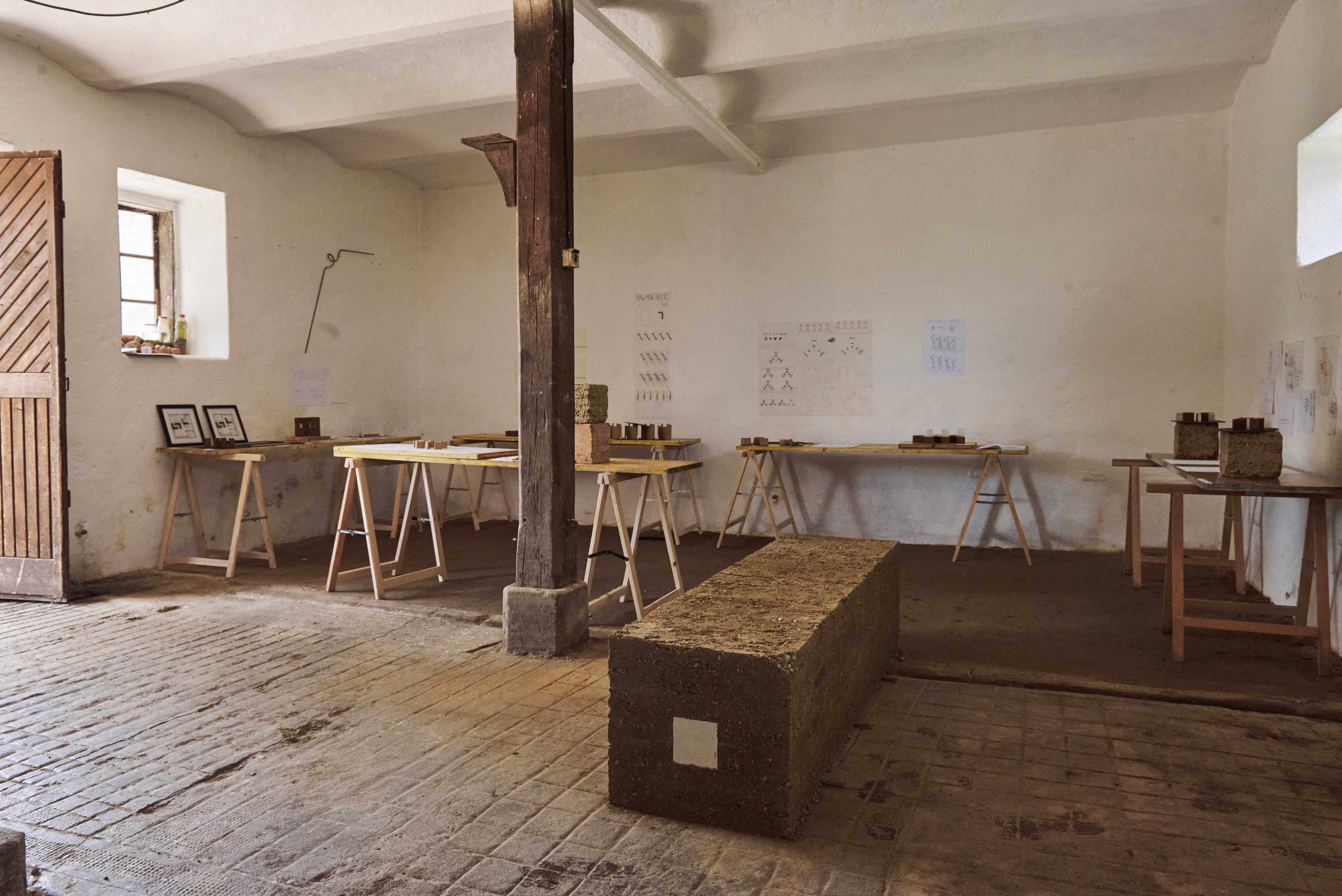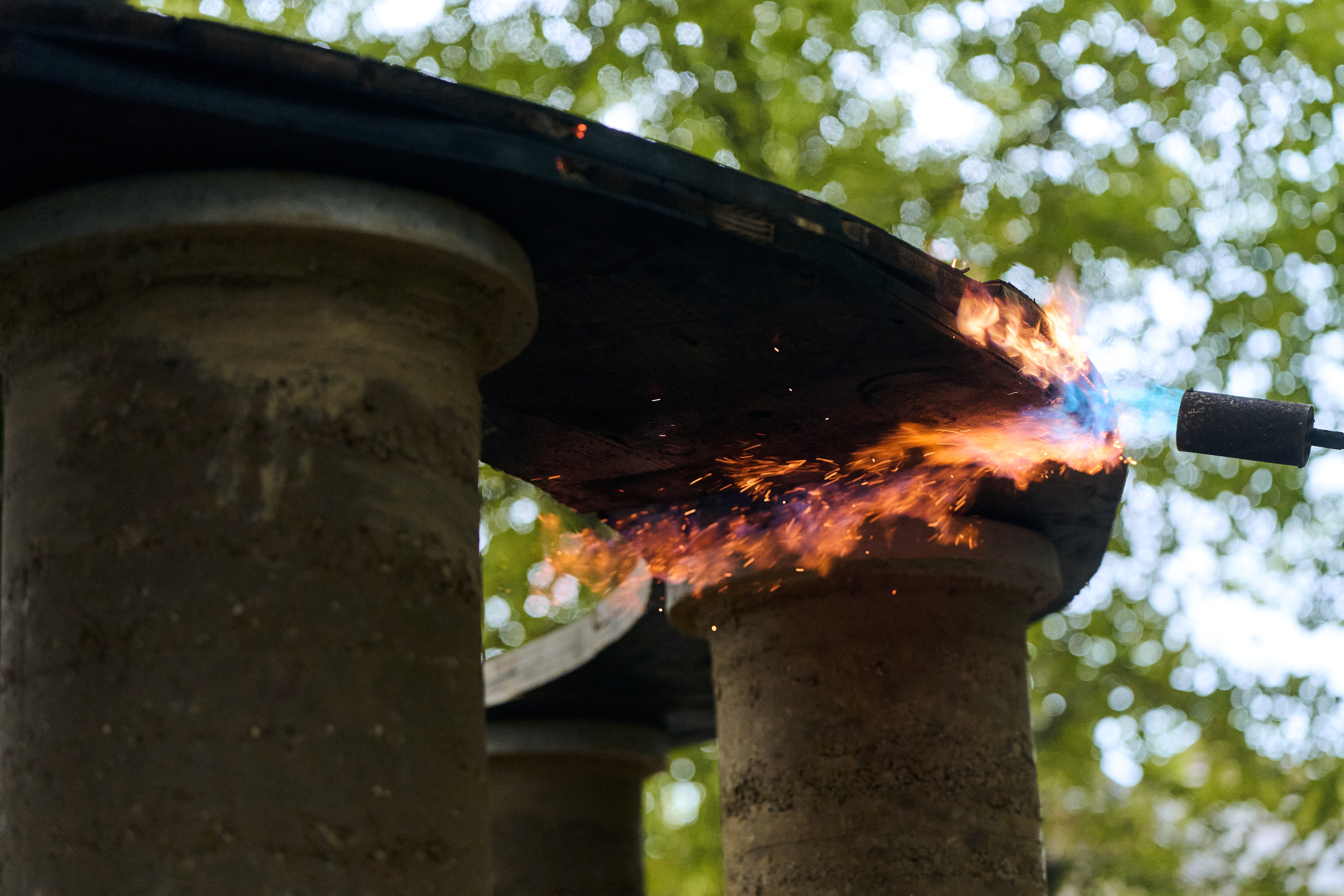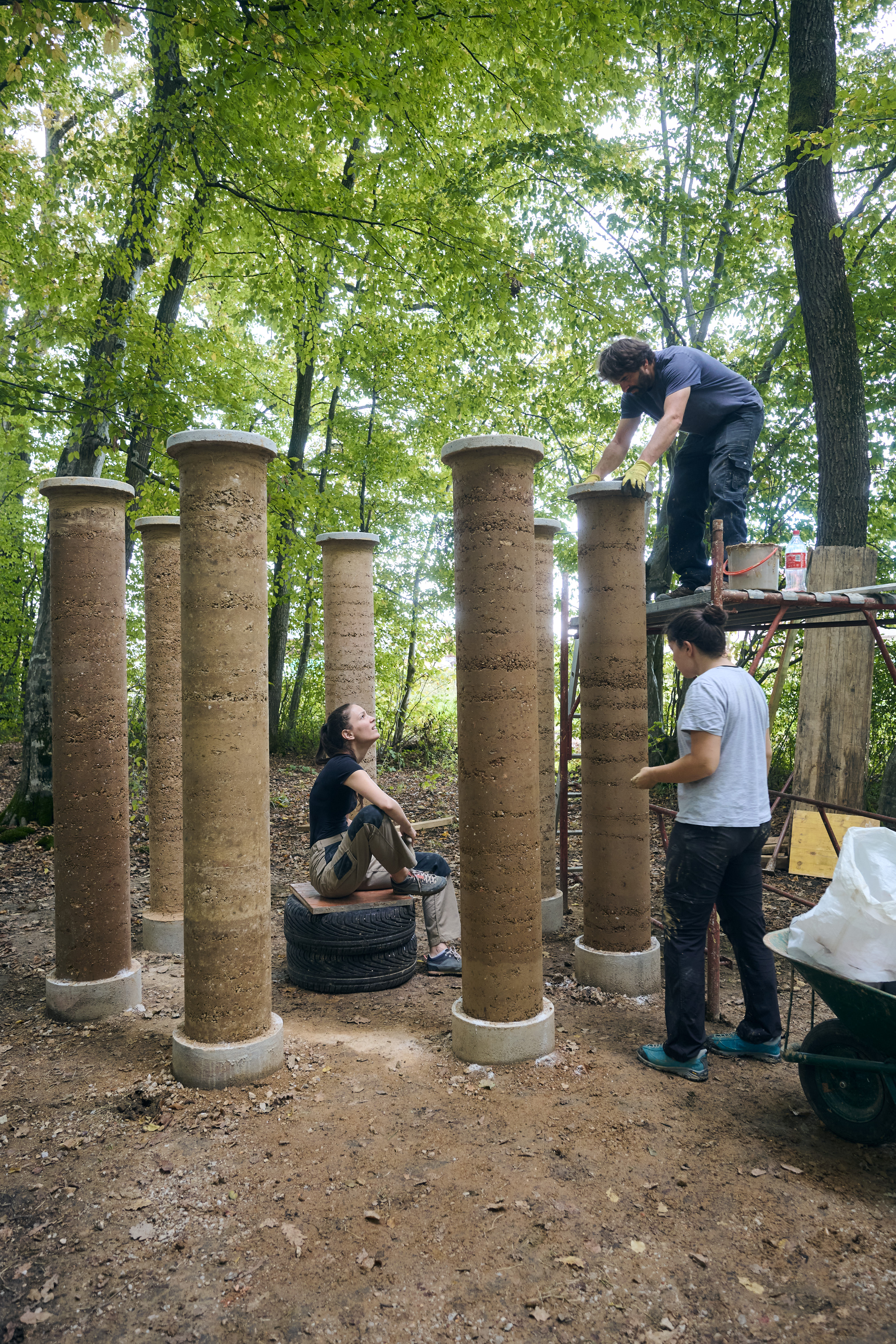Reconnecting with nature
Park of Oracles Earth Pavilions
Park of Oracles Earth Pavilions
How will we build in the future? The pavilions in Park of Oracles answer this question. They are built with rammed earth, created through research workshops. Each pavilion explored a different challenge: the first focused on construction basics, the second on modular systems and process optimization, and the third on material improvements. The park combines a rational technical approach with an intuitive, poetic expression.
Slovenia
National
It addresses urban-rural linkages
It refers to a physical transformation of the built environment (hard investment)
Yes
2024-10-27
No
No
No
As a representative of an organisation
The Park of Oracles is a collaborative project in Slovenia exploring sustainable architecture through rammed earth construction. Inspired by Martin Rauch’s 2018 lecture in Ljubljana, Outsider Magazine (publisher: Z.O.P.) initiated hands-on workshops, bringing together architects, writers, students, and the local community to experiment with earth as a building material.
Why Build with Earth?
Earth is the most sustainable material. It boasts the lowest carbon footprint, is widely available as construction waste, and creates healthy living conditions by regulating moisture, storing heat, and binding pollutants. It could significantly reduce CO2 footprint of building industries. It is 100% natural material in connets us with our roots.
Building Community
The project has engaged over 150 participants from around the world. The collaborative process fosters connections, friendships, and innovative ideas while exploring how earth can enhance public spaces.
Playful Experimentation
Research combines scientific testing of material properties with intuitive, hands-on exploration during summer workshops. Inspired by Johan Huizinga's Homo Ludens, the approach views play as essential for cultural and architectural innovation.
The Pavilions
Three pavilions illustrate the project’s evolution:
Pavilion 1 (2022): Learning from Mistakes – Early experiments refined earth mixtures and construction techniques, with trial and error guiding progress.
Pavilion 2 (2023): Modular System – This phase introduced corner formwork, pneumatic compaction, and a modular system for accessible earth-based housing.
Pavilion 3 (2024): Pillars – Exploring height and slenderness, the team built 2-meter pillars reinforced with rebar and coconut fibers, enhancing material strength.
Ultimately, the Park of Oracles merges ancient building practices with modern innovation, presenting earth construction as a sustainable answer for future architecture.
Why Build with Earth?
Earth is the most sustainable material. It boasts the lowest carbon footprint, is widely available as construction waste, and creates healthy living conditions by regulating moisture, storing heat, and binding pollutants. It could significantly reduce CO2 footprint of building industries. It is 100% natural material in connets us with our roots.
Building Community
The project has engaged over 150 participants from around the world. The collaborative process fosters connections, friendships, and innovative ideas while exploring how earth can enhance public spaces.
Playful Experimentation
Research combines scientific testing of material properties with intuitive, hands-on exploration during summer workshops. Inspired by Johan Huizinga's Homo Ludens, the approach views play as essential for cultural and architectural innovation.
The Pavilions
Three pavilions illustrate the project’s evolution:
Pavilion 1 (2022): Learning from Mistakes – Early experiments refined earth mixtures and construction techniques, with trial and error guiding progress.
Pavilion 2 (2023): Modular System – This phase introduced corner formwork, pneumatic compaction, and a modular system for accessible earth-based housing.
Pavilion 3 (2024): Pillars – Exploring height and slenderness, the team built 2-meter pillars reinforced with rebar and coconut fibers, enhancing material strength.
Ultimately, the Park of Oracles merges ancient building practices with modern innovation, presenting earth construction as a sustainable answer for future architecture.
Sustainable Architecture
Rammed Earth
Community Building
Experimental Innovation
Beauty
The Park of Oracles project embodies sustainability through innovative earth-based construction, addressing environmental, social, and cultural dimensions. Its core objective is to promote low-carbon architecture by using rammed earth, a material with the smallest carbon footprint among building materials. Earth is locally sourced, often repurposed from construction waste, transforming what would be discarded into durable, eco-friendly structures.
A key environmental achievement lies in material efficiency and circularity. Excavated soil from nearby infrastructure projects was processed, optimized, and reused in pavilion construction, minimizing waste and energy consumption. The project also explored natural additives, such as coconut fibers, to enhance material strength without synthetic reinforcements.
Socially, the project fosters community building and knowledge sharing. Over 150 participants from diverse backgrounds—architects, students, and local residents—collaborated in hands-on workshops, exchanging skills while constructing the pavilions. This approach not only strengthened social bonds but also spread sustainable building practices across borders.
The project exemplifies sustainability by merging scientific research with intuitive experimentation. Each pavilion tested new construction methods: the first focused on learning through trial and error, the second on modular systems for accessible housing, and the third on structural innovation with slender pillars.
Ultimately, the Park of Oracles stands as a model for sustainable architecture, demonstrating how ancient, earth-based techniques can be adapted for modern needs while fostering resilient communities and promoting environmental stewardship.
A key environmental achievement lies in material efficiency and circularity. Excavated soil from nearby infrastructure projects was processed, optimized, and reused in pavilion construction, minimizing waste and energy consumption. The project also explored natural additives, such as coconut fibers, to enhance material strength without synthetic reinforcements.
Socially, the project fosters community building and knowledge sharing. Over 150 participants from diverse backgrounds—architects, students, and local residents—collaborated in hands-on workshops, exchanging skills while constructing the pavilions. This approach not only strengthened social bonds but also spread sustainable building practices across borders.
The project exemplifies sustainability by merging scientific research with intuitive experimentation. Each pavilion tested new construction methods: the first focused on learning through trial and error, the second on modular systems for accessible housing, and the third on structural innovation with slender pillars.
Ultimately, the Park of Oracles stands as a model for sustainable architecture, demonstrating how ancient, earth-based techniques can be adapted for modern needs while fostering resilient communities and promoting environmental stewardship.
The Park of Oracles project merges aesthetics with cultural and experiential quality, creating an immersive environment where design fosters connection between people, place, and material. The project’s key objective is to demonstrate how sustainable architecture can also be beautiful, poetic, and culturally enriching.
Aesthetic Simplicity and Natural Beauty: The pavilions embrace the raw elegance of rammed earth, celebrating its texture, color variations, and organic form. Each structure reflects the landscape’s natural palette, blending seamlessly with the forest surroundings. The design follows archaic principles—walls, corners, columns—stripped to their essence, emphasizing form and materiality without unnecessary ornamentation.
Quality of Experience: The pavilions are not merely structures but spaces for contemplation, interaction, and creativity. Their open, non-prescriptive design invites exploration and personal interpretation, transforming each visit into a unique experience. The tactile nature of earth encourages hands-on engagement, while the structures’ thermal properties create comfortable microclimates for gatherings, workshops, and quiet reflection.
Cultural Benefits and Community Engagement: The project has become a hub for cultural exchange, hosting international workshops that combine building, learning, and creative expression. Inspired by Johan Huizinga's Homo Ludens, the emphasis on play as a cultural foundation fosters innovation and connection. Participants not only build structures but also engage with earth as a cultural medium, rediscovering ancient techniques while shaping future practices.
As an exemplary project, Park of Oracles demonstrates how sustainable architecture can transcend functionality, offering spaces that inspire, educate, and connect people through thoughtful design and shared cultural experiences.
Aesthetic Simplicity and Natural Beauty: The pavilions embrace the raw elegance of rammed earth, celebrating its texture, color variations, and organic form. Each structure reflects the landscape’s natural palette, blending seamlessly with the forest surroundings. The design follows archaic principles—walls, corners, columns—stripped to their essence, emphasizing form and materiality without unnecessary ornamentation.
Quality of Experience: The pavilions are not merely structures but spaces for contemplation, interaction, and creativity. Their open, non-prescriptive design invites exploration and personal interpretation, transforming each visit into a unique experience. The tactile nature of earth encourages hands-on engagement, while the structures’ thermal properties create comfortable microclimates for gatherings, workshops, and quiet reflection.
Cultural Benefits and Community Engagement: The project has become a hub for cultural exchange, hosting international workshops that combine building, learning, and creative expression. Inspired by Johan Huizinga's Homo Ludens, the emphasis on play as a cultural foundation fosters innovation and connection. Participants not only build structures but also engage with earth as a cultural medium, rediscovering ancient techniques while shaping future practices.
As an exemplary project, Park of Oracles demonstrates how sustainable architecture can transcend functionality, offering spaces that inspire, educate, and connect people through thoughtful design and shared cultural experiences.
The Park of Oracles project places inclusion at its core, promoting accessibility, affordability, and community-driven design. It demonstrates how sustainable architecture can also foster social equity, shared governance, and new societal models.
Accessibility and Affordability: Building with earth ensures that sustainable construction is not limited to privileged contexts. Earth is widely available, often as construction waste, making it an affordable material for everyone. By developing modular systems and refining construction techniques, the project empowers communities to build cost-effective, environmentally friendly structures. This approach promotes housing solutions that are accessible both economically and practically.
Inclusive Participation: The project thrives on community involvement. Workshops bring together people from diverse backgrounds—architects, students, locals, and international participants. Over 150 individuals from Slovenia, Croatia, Hungary, Austria, Italy, Belgium, France, Germany, and Brazil have collaborated, sharing knowledge and skills. This participatory model ensures that architecture is not solely designed by experts but co-created by the community it serves.
Design for All: The pavilions follow inclusive design principles, offering open, adaptable spaces without predefined functions. They invite users to engage on their own terms—whether for learning, gathering, or quiet reflection. The tactile nature of earth further enhances accessibility, encouraging hands-on interaction and sensory experiences.
New Societal Models: The project explores earth not just as a material but as a social connector. It fosters collective decision-making, shared responsibility, and cultural exchange, demonstrating how sustainable construction can also build resilient communities.
As an exemplary initiative, Park of Oracles shows how inclusive practices can transform architecture into a platform for empowerment, collaboration, and social innovation.
Accessibility and Affordability: Building with earth ensures that sustainable construction is not limited to privileged contexts. Earth is widely available, often as construction waste, making it an affordable material for everyone. By developing modular systems and refining construction techniques, the project empowers communities to build cost-effective, environmentally friendly structures. This approach promotes housing solutions that are accessible both economically and practically.
Inclusive Participation: The project thrives on community involvement. Workshops bring together people from diverse backgrounds—architects, students, locals, and international participants. Over 150 individuals from Slovenia, Croatia, Hungary, Austria, Italy, Belgium, France, Germany, and Brazil have collaborated, sharing knowledge and skills. This participatory model ensures that architecture is not solely designed by experts but co-created by the community it serves.
Design for All: The pavilions follow inclusive design principles, offering open, adaptable spaces without predefined functions. They invite users to engage on their own terms—whether for learning, gathering, or quiet reflection. The tactile nature of earth further enhances accessibility, encouraging hands-on interaction and sensory experiences.
New Societal Models: The project explores earth not just as a material but as a social connector. It fosters collective decision-making, shared responsibility, and cultural exchange, demonstrating how sustainable construction can also build resilient communities.
As an exemplary initiative, Park of Oracles shows how inclusive practices can transform architecture into a platform for empowerment, collaboration, and social innovation.
The Park of Oracles thrives on active citizen and civil society involvement, transforming the project into a shared cultural and educational platform. From its inception, the project embraced a bottom-up approach, encouraging participation from local communities, students, international volunteers, and professionals from diverse fields.
Community-Driven Construction: Over 150 participants have contributed through hands-on workshops. These workshops were not passive learning experiences but collaborative efforts where participants shaped the design, experimented with materials, and built the pavilions together. This inclusive, participatory process ensured that the project reflected the community’s needs and creativity.
Local Engagement: The project’s rural setting fostered strong ties with the local community, who provided resources, shared traditional knowledge, and participated in workshops. This collaboration revitalized the area, turning an abandoned farm into a vibrant hub for sustainable building practices.
Educational Impact: Citizens, students, and professionals gained practical skills in earth construction, understanding how sustainable practices can be applied in their own contexts. The project empowered them to advocate for eco-friendly construction in their communities.
Civic Influence: The workshops and research are organized by Z.O.P., the Slovenian Institute for Spatial Design, which also publishes Outsider Magazine, Slovenia's leading architectural publication. Through articles and documentation of the Park of Oracles, the project reaches a broad public audience, extending its impact beyond workshop participants to the wider community.
Ultimately, the project’s success lies in its collaborative spirit, demonstrating how citizen engagement can transform architecture into a socially and environmentally conscious movement.
Community-Driven Construction: Over 150 participants have contributed through hands-on workshops. These workshops were not passive learning experiences but collaborative efforts where participants shaped the design, experimented with materials, and built the pavilions together. This inclusive, participatory process ensured that the project reflected the community’s needs and creativity.
Local Engagement: The project’s rural setting fostered strong ties with the local community, who provided resources, shared traditional knowledge, and participated in workshops. This collaboration revitalized the area, turning an abandoned farm into a vibrant hub for sustainable building practices.
Educational Impact: Citizens, students, and professionals gained practical skills in earth construction, understanding how sustainable practices can be applied in their own contexts. The project empowered them to advocate for eco-friendly construction in their communities.
Civic Influence: The workshops and research are organized by Z.O.P., the Slovenian Institute for Spatial Design, which also publishes Outsider Magazine, Slovenia's leading architectural publication. Through articles and documentation of the Park of Oracles, the project reaches a broad public audience, extending its impact beyond workshop participants to the wider community.
Ultimately, the project’s success lies in its collaborative spirit, demonstrating how citizen engagement can transform architecture into a socially and environmentally conscious movement.
The Park of Oracles engaged diverse stakeholders across local, national, and international levels, fostering collaboration that enriched both design and implementation. Each partner contributed expertise, resources, and networks to advance sustainable earth-based construction.
Local Stakeholders: The project engaged the local community through workshops, inviting residents to participate in the building process and share traditional knowledge. The site, revitalized by the Slovenian Institute for Spatial Design (Z.O.P.), became a hub for education and cultural activities, promoting sustainable practices.
National Collaboration: On the national level, the project was supported by the Center for Creativity (CzK), recognizing its innovative approach to sustainable architecture and community building. Laboratory research on earth mixtures and structural performance was conducted in partnership with the Faculty of Civil and Geodetic Engineering (FGG) and the Slovenian National Building and Civil Engineering Institute (ZAG) in Ljubljana, ensuring scientific validation of construction techniques.
European and International Engagement: Internationally, the project received support from the German U-Institute under the CIRCE program, promoting circular economy principles and enabling knowledge exchange across Europe.
The added value of this multi-level engagement lies in the cross-disciplinary exchange of knowledge. Scientists, architects, students, and community members worked side by side, merging practical skills with academic research. This collaborative approach not only improved the project's technical outcomes but also strengthened its cultural and social impact, making the Park of Oracles a model for sustainable, community-driven architecture.
Local Stakeholders: The project engaged the local community through workshops, inviting residents to participate in the building process and share traditional knowledge. The site, revitalized by the Slovenian Institute for Spatial Design (Z.O.P.), became a hub for education and cultural activities, promoting sustainable practices.
National Collaboration: On the national level, the project was supported by the Center for Creativity (CzK), recognizing its innovative approach to sustainable architecture and community building. Laboratory research on earth mixtures and structural performance was conducted in partnership with the Faculty of Civil and Geodetic Engineering (FGG) and the Slovenian National Building and Civil Engineering Institute (ZAG) in Ljubljana, ensuring scientific validation of construction techniques.
European and International Engagement: Internationally, the project received support from the German U-Institute under the CIRCE program, promoting circular economy principles and enabling knowledge exchange across Europe.
The added value of this multi-level engagement lies in the cross-disciplinary exchange of knowledge. Scientists, architects, students, and community members worked side by side, merging practical skills with academic research. This collaborative approach not only improved the project's technical outcomes but also strengthened its cultural and social impact, making the Park of Oracles a model for sustainable, community-driven architecture.
The Park of Oracles is the result of a multidisciplinary collaboration, combining architecture, civil engineering, material science, and the arts. This cross-disciplinary approach ensured a balance between technical innovation, environmental responsibility, and creative expression.
Architecture and Construction: Architects from the Slovenian Institute for Spatial Design (Z.O.P.) led the project, applying sustainable design principles and experimenting with modular systems. Their work was shaped by hands-on workshops, where participants tested earth mixtures, formwork, and compaction techniques.
Engineering and Material Science: Collaboration with the Faculty of Civil and Geodetic Engineering (FGG) and the Slovenian National Building and Civil Engineering Institute (ZAG) ensured structural integrity. Laboratory testing refined the material’s composition, including coconut fibers for added strength.
Artistic Contributions: The project also involved artists, including sculptors, spatial designers, ceramicists, and writers. Their creative input expanded the project’s vision, transforming technical experiments into poetic architectural expressions and enriching the user experience.
Environmental and Social Sciences: Environmental experts, sociologists, and educators explored how earth construction can address social and ecological challenges, further enhancing the project’s impact.
The added value of this interdisciplinary process lies in the exchange of expertise. Scientists ensured material performance, artists introduced new perspectives, and community participants infused local knowledge. This collaborative ecosystem transformed the Park of Oracles into both a research lab and a cultural platform, demonstrating how sustainable architecture can bridge disciplines while fostering creativity and social connection.
Architecture and Construction: Architects from the Slovenian Institute for Spatial Design (Z.O.P.) led the project, applying sustainable design principles and experimenting with modular systems. Their work was shaped by hands-on workshops, where participants tested earth mixtures, formwork, and compaction techniques.
Engineering and Material Science: Collaboration with the Faculty of Civil and Geodetic Engineering (FGG) and the Slovenian National Building and Civil Engineering Institute (ZAG) ensured structural integrity. Laboratory testing refined the material’s composition, including coconut fibers for added strength.
Artistic Contributions: The project also involved artists, including sculptors, spatial designers, ceramicists, and writers. Their creative input expanded the project’s vision, transforming technical experiments into poetic architectural expressions and enriching the user experience.
Environmental and Social Sciences: Environmental experts, sociologists, and educators explored how earth construction can address social and ecological challenges, further enhancing the project’s impact.
The added value of this interdisciplinary process lies in the exchange of expertise. Scientists ensured material performance, artists introduced new perspectives, and community participants infused local knowledge. This collaborative ecosystem transformed the Park of Oracles into both a research lab and a cultural platform, demonstrating how sustainable architecture can bridge disciplines while fostering creativity and social connection.
The Park of Oracles stands out by rethinking mainstream construction through sustainable, community-driven, and artistic approaches to earth building. While conventional practices rely on high-carbon materials like concrete and steel, this project embraces rammed earth—a low-carbon, locally sourced alternative often overlooked in modern architecture.
1. Circular and Sustainable Construction:
Unlike mainstream practices, the project repurposes excavated soil from construction sites, transforming waste into a valuable resource. This circular approach reduces environmental impact while promoting affordable, eco-friendly building methods.
2. Cross-Disciplinary Collaboration:
The project integrates architecture, engineering, material science, and the arts. Collaborations with the Faculty of Civil and Geodetic Engineering (FGG), ZAG, and the CIRCE program ensured scientific validation, while artists in sculpture, ceramics, spatial interventions, and literature introduced creative perspectives.
3. Experimental, Open-Source Research:
Hands-on workshops organized by the Slovenian Institute for Spatial Design (Z.O.P.) tested construction techniques, exploring modular systems, optimized mixtures, and fiber reinforcements. Findings were shared through Outsider Magazine, promoting wider adoption.
4. Social Innovation and Community Engagement:
Unlike conventional projects driven by top-down planning, the Park of Oracles embraced a bottom-up approach, involving citizens, students, and international participants. This participatory model empowered communities to engage with sustainable construction firsthand.
By merging scientific rigor, artistic creativity, and community involvement, the Park of Oracles challenges industry norms and demonstrates how sustainable architecture can inspire future building practices.
1. Circular and Sustainable Construction:
Unlike mainstream practices, the project repurposes excavated soil from construction sites, transforming waste into a valuable resource. This circular approach reduces environmental impact while promoting affordable, eco-friendly building methods.
2. Cross-Disciplinary Collaboration:
The project integrates architecture, engineering, material science, and the arts. Collaborations with the Faculty of Civil and Geodetic Engineering (FGG), ZAG, and the CIRCE program ensured scientific validation, while artists in sculpture, ceramics, spatial interventions, and literature introduced creative perspectives.
3. Experimental, Open-Source Research:
Hands-on workshops organized by the Slovenian Institute for Spatial Design (Z.O.P.) tested construction techniques, exploring modular systems, optimized mixtures, and fiber reinforcements. Findings were shared through Outsider Magazine, promoting wider adoption.
4. Social Innovation and Community Engagement:
Unlike conventional projects driven by top-down planning, the Park of Oracles embraced a bottom-up approach, involving citizens, students, and international participants. This participatory model empowered communities to engage with sustainable construction firsthand.
By merging scientific rigor, artistic creativity, and community involvement, the Park of Oracles challenges industry norms and demonstrates how sustainable architecture can inspire future building practices.
The Park of Oracles employed a holistic, hands-on approach, combining scientific research, artistic exploration, and community-driven experimentation to advance earth-building techniques while promoting broader cultural awareness.
1. Practice-Based Learning:
The project centered around hands-on workshops organized by the Slovenian Institute for Spatial Design (Z.O.P.), where architects, students, artists, and community members collaborated to test earth-building methods. Participants explored material compositions, formwork systems, and compaction techniques, refining processes through iterative experimentation.
2. Scientific Research and Testing:
To ensure structural performance, the project partnered with the Faculty of Civil and Geodetic Engineering (FGG) and the Slovenian National Building and Civil Engineering Institute (ZAG). Laboratory testing evaluated the strength, durability, and environmental performance of various earth mixtures, including coconut fiber reinforcements.
3. Cross-Disciplinary Collaboration:
The project engaged artists, including sculptors, ceramicists, and writers, whose creative input enriched the architectural expression and expanded the project's cultural significance.
4. Knowledge Exchange and Reflection:
To contextualize the work within a broader framework, the team conducted interviews with experts across Europe engaged in similar research. Published in Outsider Magazine, these interviews fostered dialogue and reflected the project’s progress within a wider cultural and scientific discourse.
5. Community Engagement and Open Access:
By sharing findings through workshops, publications, and exhibitions, the project promoted open-source knowledge, encouraging wider adoption of sustainable building practices.
This iterative, interdisciplinary approach, rooted in practice, research, and dialogue, ensured the project’s impact extended beyond construction, inclusive, and environmentally responsible architecture.
1. Practice-Based Learning:
The project centered around hands-on workshops organized by the Slovenian Institute for Spatial Design (Z.O.P.), where architects, students, artists, and community members collaborated to test earth-building methods. Participants explored material compositions, formwork systems, and compaction techniques, refining processes through iterative experimentation.
2. Scientific Research and Testing:
To ensure structural performance, the project partnered with the Faculty of Civil and Geodetic Engineering (FGG) and the Slovenian National Building and Civil Engineering Institute (ZAG). Laboratory testing evaluated the strength, durability, and environmental performance of various earth mixtures, including coconut fiber reinforcements.
3. Cross-Disciplinary Collaboration:
The project engaged artists, including sculptors, ceramicists, and writers, whose creative input enriched the architectural expression and expanded the project's cultural significance.
4. Knowledge Exchange and Reflection:
To contextualize the work within a broader framework, the team conducted interviews with experts across Europe engaged in similar research. Published in Outsider Magazine, these interviews fostered dialogue and reflected the project’s progress within a wider cultural and scientific discourse.
5. Community Engagement and Open Access:
By sharing findings through workshops, publications, and exhibitions, the project promoted open-source knowledge, encouraging wider adoption of sustainable building practices.
This iterative, interdisciplinary approach, rooted in practice, research, and dialogue, ensured the project’s impact extended beyond construction, inclusive, and environmentally responsible architecture.
The Park of Oracles offers a replicable model for sustainable building, education, and community engagement through earth-based construction. Its approach, rooted in open-source knowledge, hands-on experimentation, and cross-disciplinary collaboration, can be adapted to various contexts, regions, and communities.
1. Methodology and Learning Approach:
The project’s practice-based workshops can be replicated anywhere with access to local earth. The modular construction system developed during the workshops simplifies the process, making it accessible for self-builders, educational institutions, and community projects. The iterative, hands-on approach encourages learning through experimentation, allowing participants to refine techniques based on real-time feedback.
2. Technology and Construction Processes:
The project demonstrated that rammed earth construction can be adapted to different climates and conditions. The use of locally available soil, often treated as waste, highlights how regions can reduce construction costs and environmental impact. Additionally, the fiber-reinforced mixtures, tested with materials like coconut fibers, can be replicated using other regionally available fibers.
3. Knowledge Sharing and Community Engagement:
The project’s inclusive, community-driven approach can be applied to other social contexts. By engaging citizens, students, and professionals through workshops, publications, and exhibitions, the project fosters shared ownership and promotes sustainable practices.
4. Cross-Cultural Reflection:
Through interviews with European experts published in Outsider Magazine, the project highlighted diverse approaches to earth building, encouraging reflection and adaptation in other cultural and environmental contexts.
Ultimately, the Park of Oracles demonstrates that sustainable building is not just a technical solution but a social and cultural process, adaptable to communities worldwide.
1. Methodology and Learning Approach:
The project’s practice-based workshops can be replicated anywhere with access to local earth. The modular construction system developed during the workshops simplifies the process, making it accessible for self-builders, educational institutions, and community projects. The iterative, hands-on approach encourages learning through experimentation, allowing participants to refine techniques based on real-time feedback.
2. Technology and Construction Processes:
The project demonstrated that rammed earth construction can be adapted to different climates and conditions. The use of locally available soil, often treated as waste, highlights how regions can reduce construction costs and environmental impact. Additionally, the fiber-reinforced mixtures, tested with materials like coconut fibers, can be replicated using other regionally available fibers.
3. Knowledge Sharing and Community Engagement:
The project’s inclusive, community-driven approach can be applied to other social contexts. By engaging citizens, students, and professionals through workshops, publications, and exhibitions, the project fosters shared ownership and promotes sustainable practices.
4. Cross-Cultural Reflection:
Through interviews with European experts published in Outsider Magazine, the project highlighted diverse approaches to earth building, encouraging reflection and adaptation in other cultural and environmental contexts.
Ultimately, the Park of Oracles demonstrates that sustainable building is not just a technical solution but a social and cultural process, adaptable to communities worldwide.
The Park of Oracles addresses global challenges such as climate change, resource depletion, and social fragmentation by providing local, sustainable solutions rooted in earth-based construction, community engagement, and knowledge sharing.
1. Climate Change and Carbon Footprint:
Traditional construction materials like concrete and steel contribute significantly to global carbon emissions. The project promotes rammed earth as a low-carbon alternative, using locally sourced soil—often treated as waste—to create durable structures. This circular approach reduces transportation emissions and environmental impact while promoting climate-resilient architecture.
2. Resource Depletion and Waste Management:
Excavation for infrastructure generates vast amounts of non-hazardous construction waste, much of which can be repurposed for building. By transforming this waste into a valuable resource, the project demonstrates how to create affordable, eco-friendly structures while reducing environmental strain.
3. Affordable Housing and Sustainable Development:
The modular earth-building system developed through the project offers a scalable, cost-effective solution for housing. This approach can be adapted to different regions, empowering local communities to build affordable, healthy living spaces while promoting economic resilience.
4. Social Fragmentation and Community Building:
Through hands-on workshops, the project fosters community connections, bringing together people from diverse backgrounds to collaborate, learn, and share skills. This bottom-up approach strengthens social ties while promoting sustainable practices.
5. Knowledge Transfer and Global Reflection:
By conducting interviews with experts across Europe, published in Outsider Magazine, the project has facilitated cross-cultural dialogue, encouraging other communities to adopt similar approaches tailored to their local contexts.
1. Climate Change and Carbon Footprint:
Traditional construction materials like concrete and steel contribute significantly to global carbon emissions. The project promotes rammed earth as a low-carbon alternative, using locally sourced soil—often treated as waste—to create durable structures. This circular approach reduces transportation emissions and environmental impact while promoting climate-resilient architecture.
2. Resource Depletion and Waste Management:
Excavation for infrastructure generates vast amounts of non-hazardous construction waste, much of which can be repurposed for building. By transforming this waste into a valuable resource, the project demonstrates how to create affordable, eco-friendly structures while reducing environmental strain.
3. Affordable Housing and Sustainable Development:
The modular earth-building system developed through the project offers a scalable, cost-effective solution for housing. This approach can be adapted to different regions, empowering local communities to build affordable, healthy living spaces while promoting economic resilience.
4. Social Fragmentation and Community Building:
Through hands-on workshops, the project fosters community connections, bringing together people from diverse backgrounds to collaborate, learn, and share skills. This bottom-up approach strengthens social ties while promoting sustainable practices.
5. Knowledge Transfer and Global Reflection:
By conducting interviews with experts across Europe, published in Outsider Magazine, the project has facilitated cross-cultural dialogue, encouraging other communities to adopt similar approaches tailored to their local contexts.
The Park of Oracles has achieved significant tangible and intangible outcomes, delivering social, environmental, and educational benefits for both direct and indirect beneficiaries.
1. Open Public Space:
The primary result is a publicly accessible park, open to everyone. The park features three earth-built pavilions, each representing a different stage of research and innovation. This space serves as an educational hub, inviting visitors to explore sustainable architecture while enjoying a unique cultural and natural environment.
2. Knowledge Sharing:
The project has generated extensive documentation, including articles, summaries, and reports, all freely accessible through Outsider Magazine and other platforms. These publications ensure that findings, methodologies, and insights are available to architects, researchers, and the general public, promoting open-source learning.
3. Community and Educational Impact:
Over 150 participants from Slovenia and abroad joined the workshops, gaining practical skills in earth-building while collaborating across disciplines. This hands-on experience empowered students, architects, and community members to explore sustainable construction methods, fostering global connections and local empowerment.
4. Environmental and Social Benefits:
By repurposing local earth and construction waste, the project reduced carbon emissions while promoting eco-friendly building practices. The park has become a community space, encouraging dialogue, recreation, and education, while inspiring other regions to adopt similar practices.
Ultimately, the Park of Oracles demonstrates how sustainable architecture can create inclusive, educational, and environmentally conscious spaces, benefiting both local communities and the global architectural discourse.
1. Open Public Space:
The primary result is a publicly accessible park, open to everyone. The park features three earth-built pavilions, each representing a different stage of research and innovation. This space serves as an educational hub, inviting visitors to explore sustainable architecture while enjoying a unique cultural and natural environment.
2. Knowledge Sharing:
The project has generated extensive documentation, including articles, summaries, and reports, all freely accessible through Outsider Magazine and other platforms. These publications ensure that findings, methodologies, and insights are available to architects, researchers, and the general public, promoting open-source learning.
3. Community and Educational Impact:
Over 150 participants from Slovenia and abroad joined the workshops, gaining practical skills in earth-building while collaborating across disciplines. This hands-on experience empowered students, architects, and community members to explore sustainable construction methods, fostering global connections and local empowerment.
4. Environmental and Social Benefits:
By repurposing local earth and construction waste, the project reduced carbon emissions while promoting eco-friendly building practices. The park has become a community space, encouraging dialogue, recreation, and education, while inspiring other regions to adopt similar practices.
Ultimately, the Park of Oracles demonstrates how sustainable architecture can create inclusive, educational, and environmentally conscious spaces, benefiting both local communities and the global architectural discourse.

